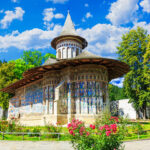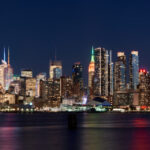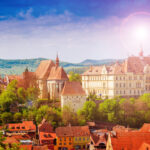- Explore Central Park: From Lazy Picnics to Romantic Boat Rides
- Discover the World’s Art in One Place: The Metropolitan Museum of Art (The Met)
- Experience the Magic of Broadway: World-Class Theater Awaits in NYC
- Journey to Liberty and Legacy: Unveil the Secrets of the Statue of Liberty and Ellis Island
- Elevate Your NYC Experience: Walk the High Line’s Urban Oasis
- Dive into Times Square: The Heartbeat of NYC’s Buzzing Metropolis
- Honor and Reflection at the 9/11 Memorial & Museum
- Brooklyn Bridge Stroll: Manhattan to Brooklyn with Skyline Views
- MoMA Visit: A Mecca for Modern Art Aficionados
- Empire State: A Sky-High Perspective of New York City
- Top of the Rock: Sunrise vs. Sunset Panoramic Splendor
- SoHo Shopping: Trendy Boutiques Meet Fashion Giants
- NY Public Library & Bryant Park: Culture Meets Tranquility
- Greenwich Village: Bohemian Rhapsody Meets Urban Charm
- Chinatown & Little Italy: NYC’s Dual Culinary Journey
- NYC Food Tours: A Smorgasbord of Global Flavors
- Intrepid Museum: A Voyage Through Air, Sea, and Space History
- Chelsea Market: NYC’s Melting Pot of Flavors and Finds
- One World Observatory: Gaze from the Western Hemisphere’s Summit
- Live Taping in NYC: See TV Magic Unfold Before Your Eyes
Have a long weekend to spend in NYC? Here are the top 20 things to do, based on our many trips to NYC. We started visiting when our daughter became a fashion student at Parsons, and we gradually fell in love with the city.
With our busy schedules, we typically spend a long weekend in New York, and the list is based on our direct experience visiting these places.
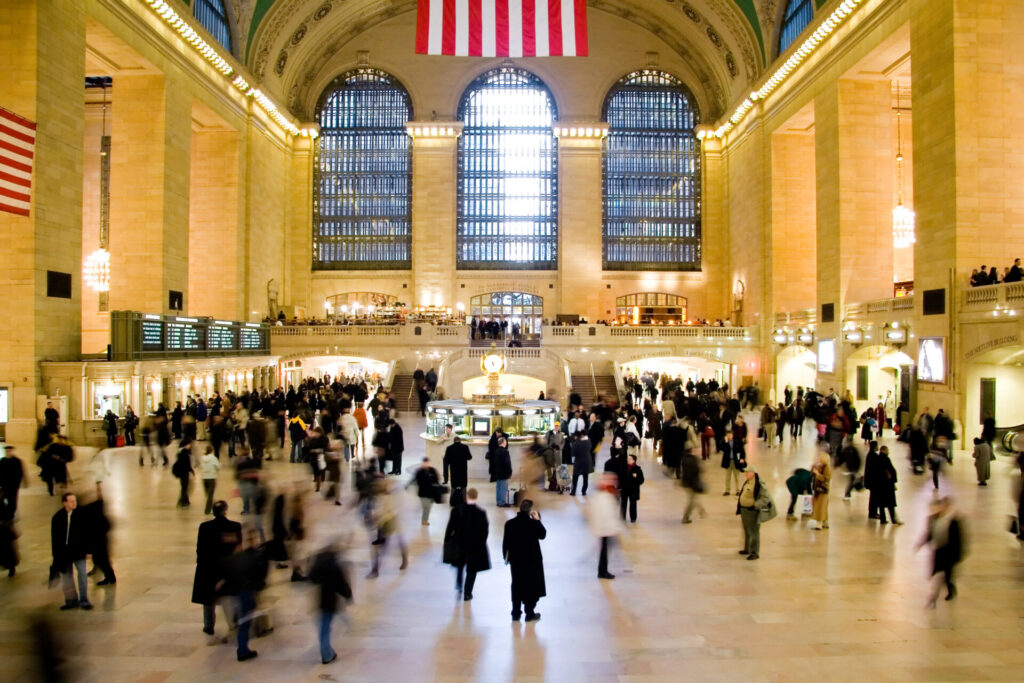
Explore Central Park: From Lazy Picnics to Romantic Boat Rides

Why it Matters
Central Park is an oasis in the concrete jungle, offering a versatile experience for all.
The Big Picture
New York City is a bustling metropolis, often described as “the city that never sleeps.” Yet, amid its towering skyscrapers and bustling streets lies Central Park—a green haven that offers respite from the city’s relentless pace. Covering 843 acres, Central Park is an emblem of what makes New York so unique: a perfect blend of organized chaos and serene landscapes, right in the heart of Manhattan.
Whether you’re a New Yorker needing a break from your daily routine or a tourist aiming to see a softer side of the Big Apple, Central Park is your go-to destination. Activities range from simply lounging on the Great Lawn with a book in hand to sailing miniature boats on Conservatory Water. Want a touch of romance? Nothing says love like a leisurely boat ride on the Central Park Lake, offering views of the city skyline and the iconic Bow Bridge. From its walking trails to its playgrounds, Central Park is a multifaceted gem that deserves a spot on any NYC itinerary.
By the Numbers
- 843: The total acreage of Central Park.
- 21: The number of playgrounds scattered throughout the park.
- 26,000: The number of trees that provide that much-needed shade.
- 58 miles: The length of the walking paths in Central Park.
More Details
You could easily spend an entire day, if not several days, exploring Central Park and barely scratch the surface. This green lung in the middle of Manhattan is not just a park; it’s a sanctuary where you can escape, even if momentarily, the grind of city life.

A Lazy Afternoon Picnic
Start your Central Park escapade with a laid-back picnic. The Great Lawn is the obvious choice for this, offering 55 acres of open space to lay your blanket and set up your basket. And don’t think picnics are just for the summertime. Fall picnics with a pumpkin-spice latte in hand are just as magical, with the colorful foliage serving as a picturesque backdrop.
Let’s Take a Stroll
The park is dotted with historical monuments and statues that tell the story of the city and the nation. One notable walk is along Literary Walk, located on the south end of the Mall. Here you’ll find statues of notable literary figures like Shakespeare and Robert Burns. Walking here is like a stroll through history, albeit with the modern twist of street musicians and artists showcasing their talents.
Ahoy, A Boat Ride!
If romance is on the agenda or you’re just seeking a tranquil break, rent a rowboat at the Loeb Boathouse. For a modest fee, you can paddle around the Central Park Lake for an hour. Not only does it provide a unique vantage point of the city, but it also takes you under the iconic Bow Bridge, one of the most photographed spots in the park.
More than Just Green Spaces
Central Park isn’t just about leisure and relaxation. It’s also home to cultural establishments like the Central Park Zoo and the Swedish Cottage Marionette Theatre. Additionally, the park plays host to seasonal events like open-air theater performances and summer concerts.
Keep an Eye for the Hidden Gems
From Alice in Wonderland statues to hidden waterfalls, Central Park is filled with lesser-known attractions. For instance, the Ramble is a 36-acre woodland area with meandering paths, rustic bridges, and birdwatching opportunities. It’s the perfect place to lose yourself in nature without leaving the city.
Central Park is much more than just a park. It’s a representation of the diversity and versatility that New York City offers. From its sprawling lawns to its secluded woodlands, each corner of Central Park offers a new experience, a new story, and a new opportunity to fall in love with the city all over again. So, if you’re planning a visit to NYC, make sure to reserve a day—or more—to explore this remarkable urban oasis.
Discover the World’s Art in One Place: The Metropolitan Museum of Art (The Met)
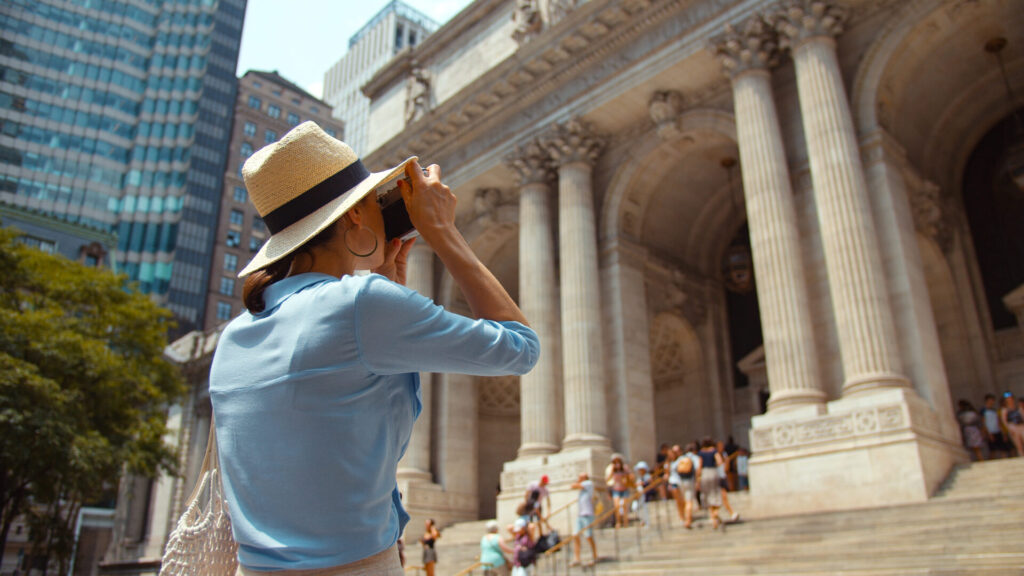
Why it Matters
The Met offers an unparalleled journey through global art history, all under one roof.
The Big Picture
When it comes to iconic cultural landmarks, few can rival the Metropolitan Museum of Art, commonly known as the Met. Situated along Fifth Avenue and flanking the eastern edge of Central Park, the museum is more than just a building filled with art; it’s a treasure trove of human history, creativity, and achievement. Housing over two million works that span 5,000 years, the Met provides an in-depth look at the scope of artistic expression across various cultures and time periods.
Whether you’re an art aficionado or a casual visitor, the museum’s vast collections are sure to captivate you. From ancient Egyptian artifacts to 20th-century American decorative arts, there is something for everyone. It’s like a whirlwind tour of the world’s art history without ever leaving New York City.

By the Numbers
- Over 2 million: Number of works in the museum’s collection.
- 5,000: The span of years that the museum’s collection covers.
- 3: The number of locations of the Met—Fifth Avenue, the Cloisters, and the Met Breuer.
- 7 million: Approximate number of visitors each year, making it one of the most visited art museums in the world.
More Details
The sheer size and diversity of the Metropolitan Museum of Art’s collections make it a daunting but rewarding experience. With over two million works, you might wonder where to start your visit. While it’s virtually impossible to cover everything in a single visit, there are some must-see highlights and hidden gems you should know about.
The European Paintings
The Met’s European Paintings department alone boasts of over 2,500 paintings from the 13th to the 19th centuries. This includes masterpieces by iconic artists like Rembrandt, Vermeer, and Van Gogh. Don’t miss Van Gogh’s “Irises,” which is a testament to the artist’s passion for color and nature.
The American Wing
For those interested in understanding the fabric of American history through art, the American Wing is a must-visit. With over 20,000 pieces, this department showcases a wide array of American art, including decorative arts, period rooms, and iconic paintings like Emanuel Leutze’s “Washington Crossing the Delaware.”
Islamic Art
The Met’s collection of Islamic art is one of the most comprehensive in the world, offering a profound look into the artistic traditions of Islamic cultures. From intricately designed carpets to illuminated manuscripts, this section promises a deep dive into a rich and often misunderstood culture.

Beyond Traditional Art
The Met isn’t just about paintings and sculptures. It offers a variety of other art forms, including musical instruments, armor, and even period rooms that transport you to a different era. It’s a place where art intersects with history, fashion, and technology.
Tips for Visitors
The Met is massive, and tackling it can be overwhelming. It’s advisable to plan your visit ahead of time. Prioritize sections that pique your interest and consider taking guided tours for a more insightful experience. Also, don’t forget to check out temporary exhibitions, which are often as remarkable as the permanent collections.
In conclusion, the Metropolitan Museum of Art is not just a museum; it’s an enriching experience that offers a panoramic view of human creativity and history. No visit to New York City would be complete without spending a day lost in the corridors of this cultural behemoth. So, next time you find yourself in the Big Apple, make sure to set aside ample time to discover the world through the lens of art at the Met.
Experience the Magic of Broadway: World-Class Theater Awaits in NYC
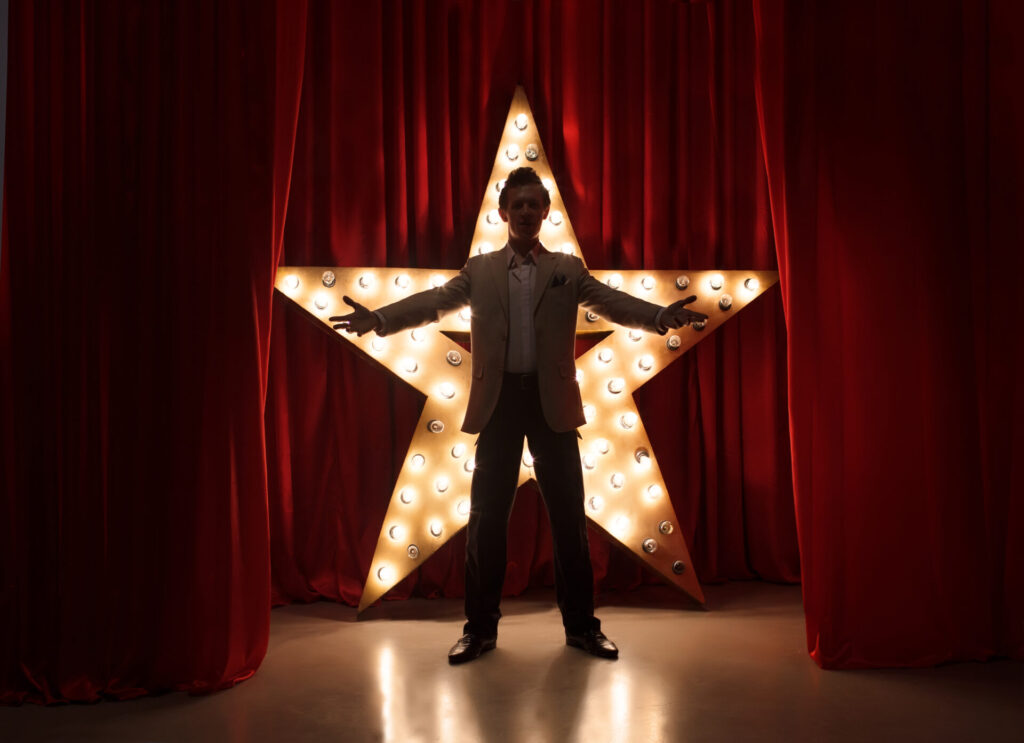
Why it Matters
Broadway epitomizes the pinnacle of live theater, blending talent, storytelling, and spectacle.
The Big Picture
Broadway is more than just a street in New York City; it’s a symbol of American theater, a rite of passage for actors, and a must-experience event for visitors and locals alike. Nestled in Manhattan’s Theater District, Broadway is renowned for hosting some of the highest level of theater productions in the world. Whether you’re a fan of classical musicals, cutting-edge plays, or spectacular revivals, Broadway offers a smorgasbord of choices, ensuring that every theater-goer finds something that resonates with them.
The electric atmosphere begins the moment you step into the district—neon lights flashing, posters of leading stars decorating the facades, and an air of anticipation that something extraordinary is about to happen. And once the curtain rises, it does. From the stellar performances to the intricately designed sets and costumes, Broadway shows promise an immersive experience that’s hard to replicate elsewhere.
By the Numbers
- 41: The number of professional theaters in the Broadway district.
- Over 14 million: Annual attendance for Broadway shows.
- $1.8 billion: The total box office gross for the 2018-2019 Broadway season.
- 6: The average number of weeks a new show takes to recoup its initial investment.
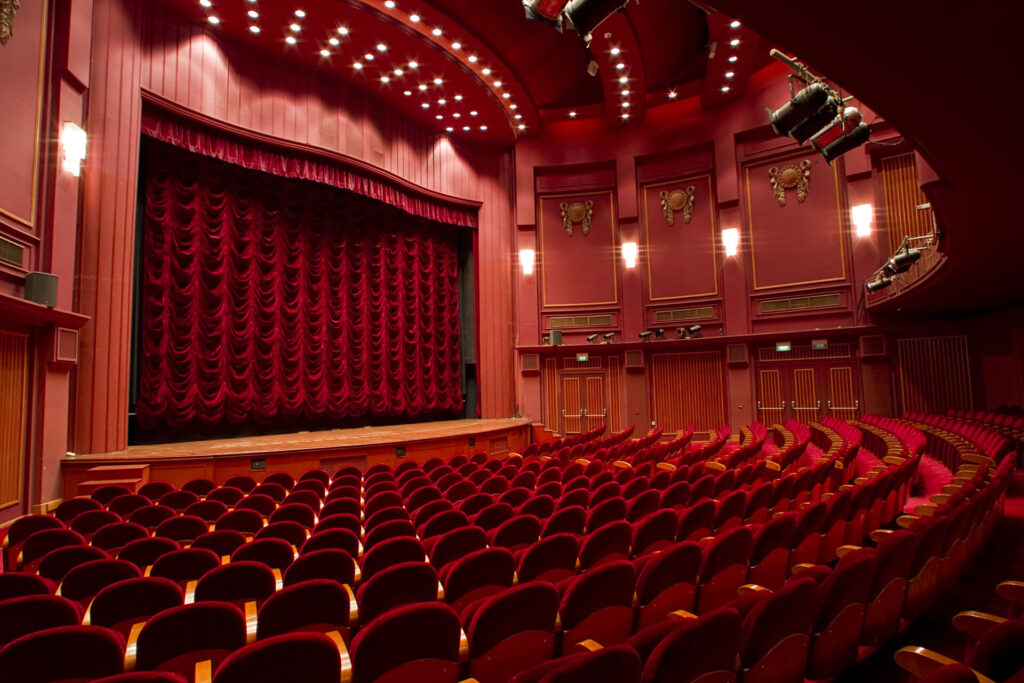
More Details
Broadway isn’t just an American cultural gem; it’s a testament to the power of storytelling, artistic collaboration, and the magic that can only happen when the house lights go down and the stage lights come up. But what makes a Broadway show a must-see experience?
The Talent
Broadway attracts top-notch talent, not only from the United States but from around the world. From accomplished actors and singers to gifted directors and choreographers, the people who bring Broadway shows to life are some of the best in their fields. Expect stellar performances that bring characters to life in the most unforgettable ways.
The Production Quality
Broadway shows are known for their high production values. The costumes, sets, and special effects are often the result of months—or even years—of planning and execution. Shows like “The Lion King” or “Wicked” offer awe-inspiring visual spectacles in addition to compelling narratives and performances.

The Variety
The range of shows available ensures that there’s something for everyone. From iconic classics like “Phantom of the Opera” to modern hits like “Hamilton,” Broadway caters to a diverse array of tastes and preferences. Moreover, it’s not just about musicals; straight plays also find a home on Broadway, offering thought-provoking drama and comedy.
Tips for a Great Broadway Experience
Considering how popular these shows are, it’s advisable to book your tickets well in advance. Also, each theater has its own set of policies, including dress codes and late seating rules, so be sure to read up before your visit. Finally, don’t forget to pick up a Playbill as a memento of your experience.
Experiencing a Broadway show is more than just a night at the theater. It’s a journey into a world where stories come alive, emotions run high, and for a few hours, you’re transported into a different realm. If you’re in New York City and have the opportunity, catching a Broadway show isn’t just an option—it’s a must.
Journey to Liberty and Legacy: Unveil the Secrets of the Statue of Liberty and Ellis Island
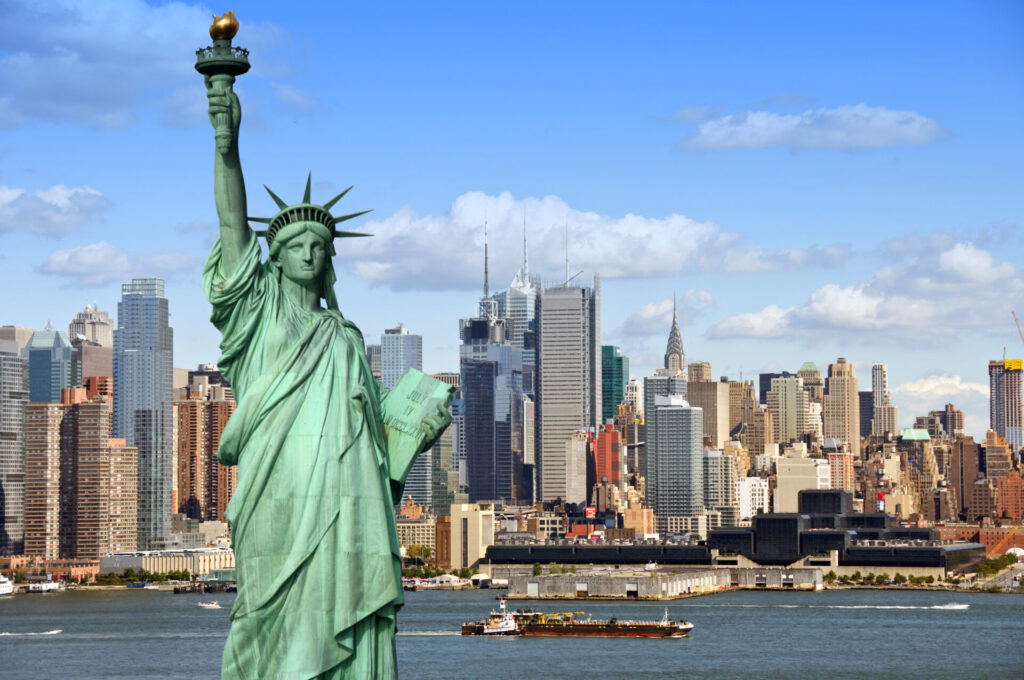
Why it Matters
These iconic landmarks offer an enlightening look into America’s ideals and immigrant history.
The Big Picture
When it comes to American symbols, few are as iconic as the Statue of Liberty and Ellis Island. Perched in New York Harbor, these landmarks serve as potent reminders of America’s founding principles and the diverse tapestry of its people. The Statue of Liberty, gifted by France in 1886, stands as a universal symbol of freedom and democracy. A short ferry ride away, Ellis Island was the gateway for over 12 million immigrants seeking a new life in America. Together, they offer a poignant journey through the ideals and realities that have shaped the nation.
Whether you’re tracing your ancestry or simply absorbing the weight of history, a tour of these two landmarks is an enriching experience. The Statue of Liberty enlightens with its grandeur and symbolism, while Ellis Island provides an evocative glimpse into the immigrant experience.
By the Numbers
- 151: Height of the Statue of Liberty from heel to the top of its head.
- 12 million: Approximate number of immigrants processed at Ellis Island from 1892 to 1954.
- 3.5 million: Average annual visitors to both landmarks.
- 354: Number of steps to reach the Statue of Liberty’s crown.
More Details
Visiting the Statue of Liberty and Ellis Island isn’t just a regular tourist activity; it’s a pilgrimage into the very heart of America’s cultural and historical identity. Here’s why these landmarks deserve your attention:
The Majestic Lady Liberty
No picture does justice to the feeling of standing at the base of the Statue of Liberty. The statue itself is an engineering marvel, and the symbolism imbued in its design—from the seven spikes representing the seven continents to the broken chains at its feet—offers layers of meaning to unpack. While there, don’t miss the pedestal museum which houses exhibits explaining the statue’s history and construction.
Ellis Island: Gateway to Dreams
Ellis Island presents a different but equally significant experience. Through photographs, artifacts, and audio recordings, the Ellis Island Immigration Museum helps visitors understand the immigrant journey. Highlights include the American Immigrant Wall of Honor and the restored Great Hall, which once buzzed with the anticipation and apprehension of new arrivals.
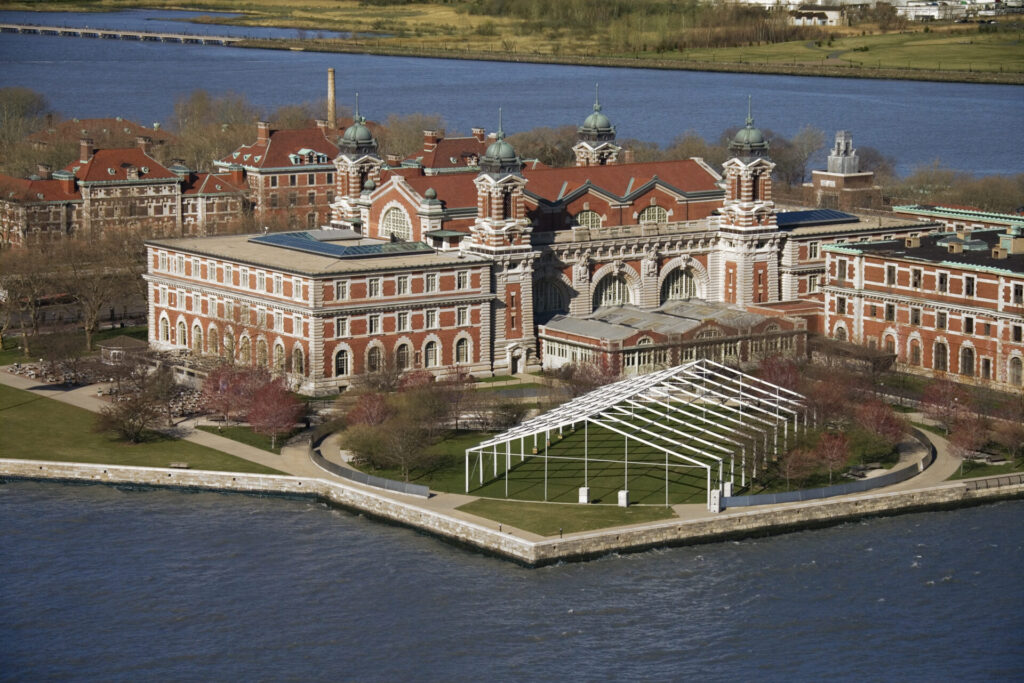
A Unified Experience
One of the most impactful aspects of touring these landmarks is the way they complement each other. The Statue of Liberty embodies the ideals that drew millions to America, while Ellis Island embodies the reality of their experience. Together, they create a fuller, richer narrative.
Planning Your Visit
You’ll need at least half a day to tour both landmarks, and it’s wise to book your ferry and crown access tickets in advance, especially during peak tourist seasons. If you’re interested in your family’s immigrant history, consider setting aside additional time to search the archives at Ellis Island.

The Statue of Liberty and Ellis Island offer more than just a glimpse into the past; they offer insight into the core values and experiences that define America. They serve as educational platforms, emotional touchstones, and, most importantly, as powerful reminders of the enduring American ideals of freedom and opportunity. Whether you’re a visitor or a lifelong New Yorker, this is one journey that promises to be enlightening in every sense of the word.
Elevate Your NYC Experience: Walk the High Line’s Urban Oasis

Why it Matters
The High Line offers a unique blend of nature, art, and history in an elevated urban setting.
The Big Picture
Amidst the concrete jungle of Manhattan, the High Line emerges as a green haven, an elevated linear park that defies traditional urban landscapes. Built on a disused, southern portion of the New York Central Railroad, the High Line is a fascinating example of how innovative urban renewal can transform industrial relics into public spaces. Extending from the Meatpacking District to Hudson Yards, this 1.45-mile-long park provides visitors a chance to experience New York from a different vantage point.
Floating 30 feet above street level, the High Line is a lush tapestry of meticulously curated gardens, art installations, and recreational spaces. It invites visitors to stroll leisurely amidst natural beauty while enjoying expansive views of the Hudson River and the city’s skyline. Whether you’re a nature enthusiast, an art lover, or simply someone looking to escape the city’s frenetic pace, the High Line offers a breath of fresh air—quite literally.

By the Numbers
- 1.45: The length, in miles, of the High Line.
- 30 feet: The height at which the High Line is elevated above street level.
- 5 million: Approximate annual visitors to the High Line.
- Over 500: Number of species of plants and trees in the High Line’s gardens.
More Details
A walk on the High Line isn’t just a casual stroll in a park; it’s a multi-sensory journey through an elevated urban sanctuary. Here’s what makes this attraction so distinctive:
A Walk Through Nature
The High Line’s gardens feature over 500 species of plants and trees, carefully selected to thrive in its unique environment. Seasonal changes bring a revolving palette of colors, textures, and fragrances, making each visit a unique experience. From ornamental grasses to blooming perennials, the park showcases nature’s resilience and diversity.
A Gallery in the Sky
Art enthusiasts will be delighted by the High Line’s dedication to public art. The park frequently hosts temporary installations, performances, and murals, transforming it into an open-air gallery. Works by both established and emerging artists are featured, making the High Line a canvas for creative expression.
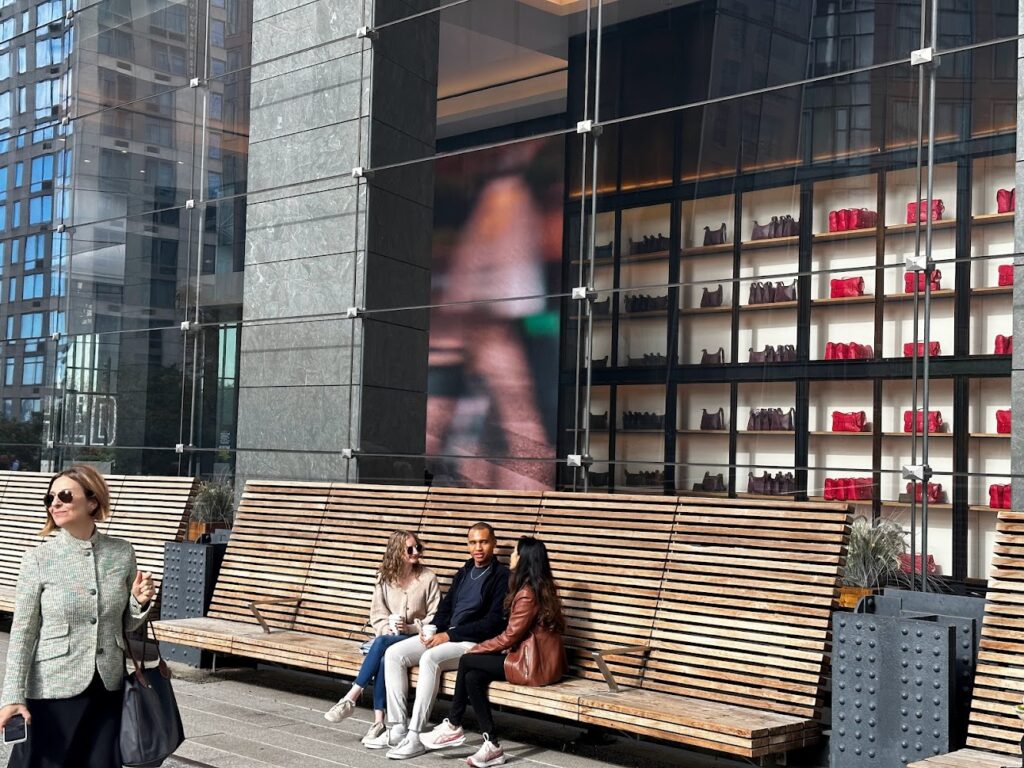
A Historical Perspective
Informative placards and preserved rail tracks remind visitors of the High Line’s industrial past. Once a freight rail line used to deliver goods to warehouses along the West Side, the park now stands as a successful model of industrial reclamation and urban renewal.
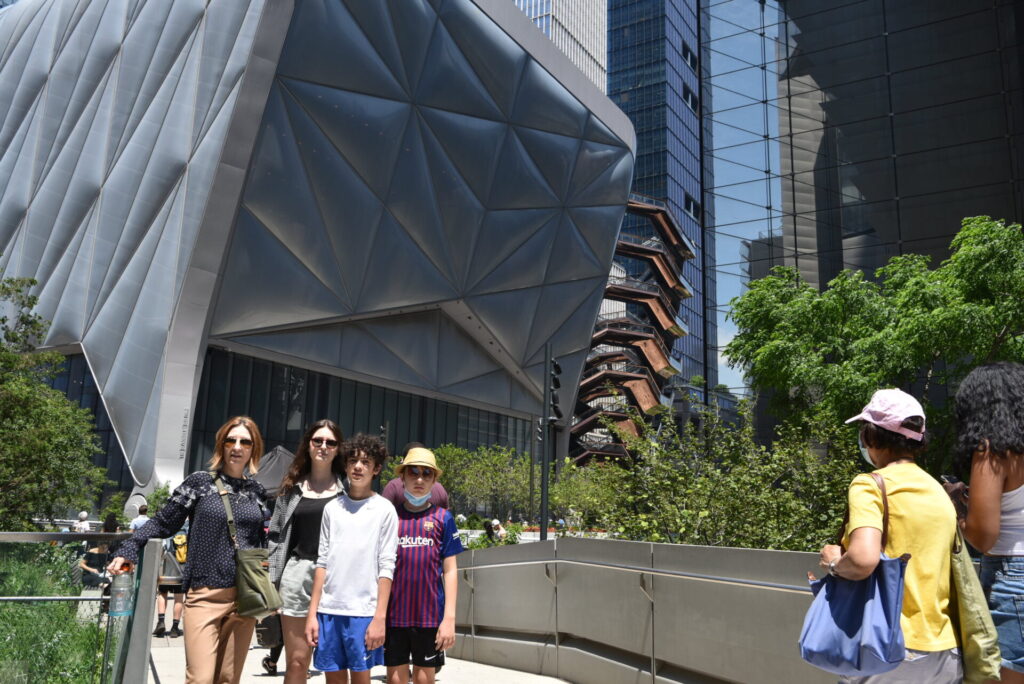
Places to Unwind
The High Line is dotted with seating areas, overlooks, and even an open-air theater where visitors can sit back and soak in the scenery or people-watch. Food vendors offer a range of local treats, providing an opportunity to refuel as you explore.
Tips for Visitors
The High Line can get crowded, especially during weekends and holidays. Early mornings and weekdays are generally less busy, offering a more tranquil experience. Also, don’t forget to download the High Line app for a self-guided tour that provides insights into the park’s history, art, and horticulture.
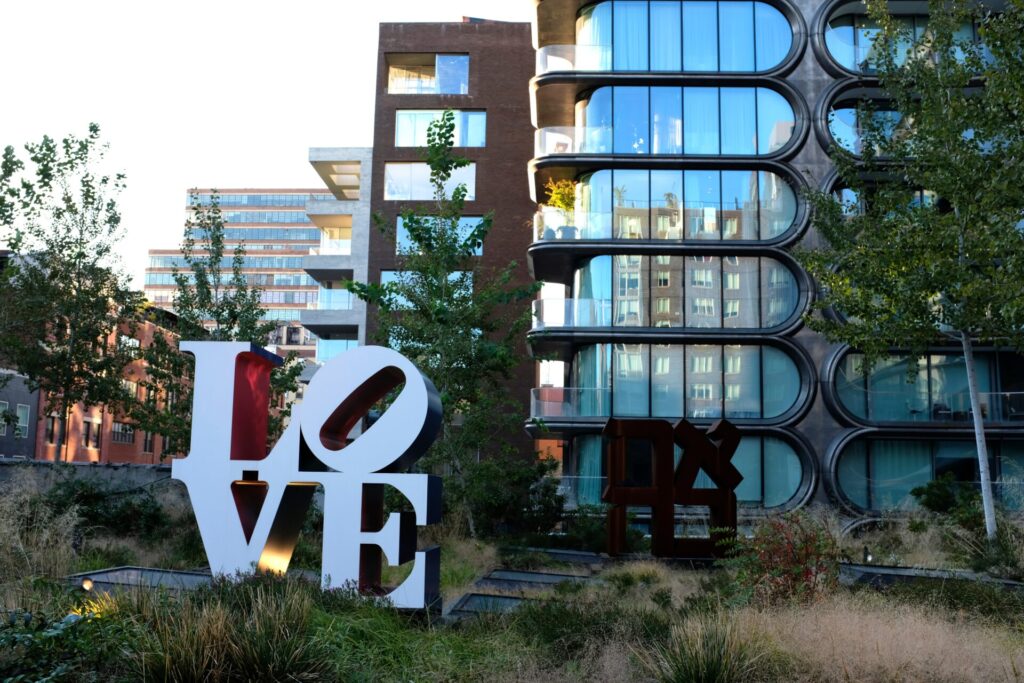
The High Line is more than just a park; it’s a symbol of how urban spaces can be ingeniously reimagined to enhance community well-being. Its unique blend of natural beauty, art, and history provides a refreshing break from the city’s hustle and bustle, making it a must-visit for anyone looking to experience a different side of New York City.
Dive into Times Square: The Heartbeat of NYC’s Buzzing Metropolis

Why it Matters
Times Square is a vibrant sensory overload, epitomizing New York’s dynamic spirit.
The Big Picture
Times Square, famously known as “The Crossroads of the World,” is a whirlwind of bright lights, towering digital billboards, and ceaseless energy. This bustling intersection is not just a tourist attraction but a living, breathing symbol of New York City’s vibrancy and its constant state of flux. For many, a visit to Times Square is a quintessential New York experience, an immersion into an environment where urban life is amplified to its maximum.
It’s a place where popular culture, commerce, and diverse crowds intersect. Here, you can catch a glimpse of the latest trends, from fashion to technology, all while being surrounded by some of the most iconic images of the city. Street performers entertain at every corner, adding to the carnival-like atmosphere that prevails day and night.
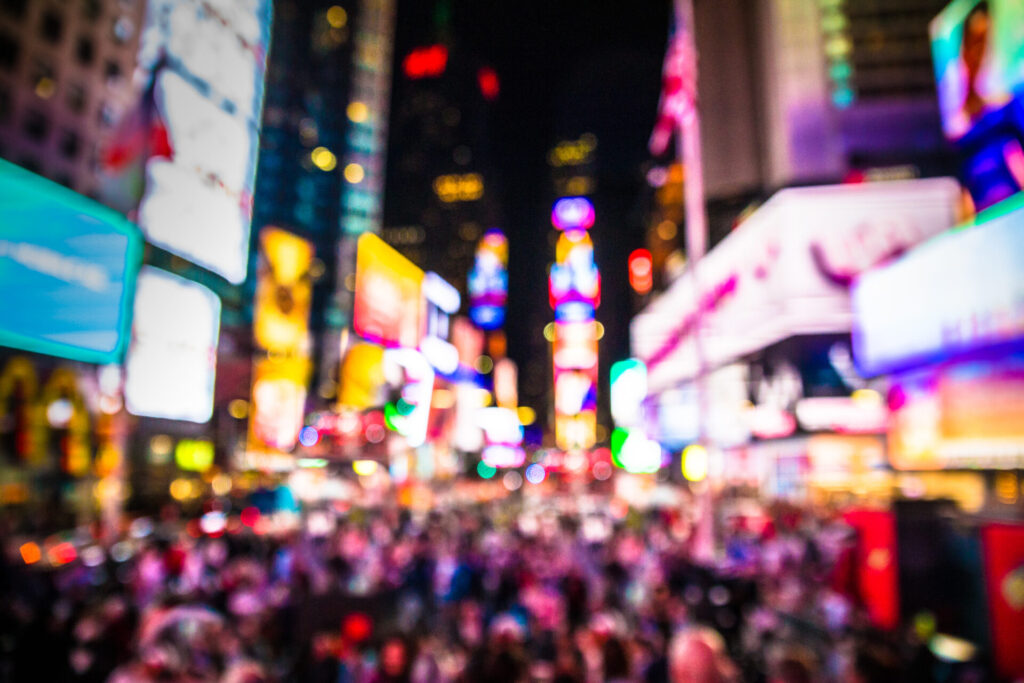
By the Numbers
- Over 50 million: The number of visitors Times Square attracts each year.
- 55 giant LED screens: The amount of screens lighting up Times Square.
- 460,000: The daily pedestrian count in Times Square.
- $2,000 to $3,000: The cost per square foot for advertising, making it one of the world’s most expensive advertising locations.
More Details
A trip to Times Square is like stepping onto a stage where the set is always changing and you’re part of the cast. Here’s what you can expect from this emblematic New York locale:
The Entertainment Epicenter
Home to Broadway and its plethora of theaters, Times Square is the go-to destination for theatergoers. Whether it’s a long-running classic or a new, cutting-edge production, the magic of Broadway is at your fingertips.
The Commercial Hub
Times Square is also a hub of commercial activity, with flagship stores and restaurants offering everything from fashion to tech gadgets, to international cuisine. Retail therapy here comes with a side of spectacular views.
The New Year’s Eve Ball
No discussion of Times Square is complete without mentioning the New Year’s Eve Ball Drop, an event that has become synonymous with global celebrations of the New Year. It’s a tradition that dates back to 1907 and is watched by millions worldwide each year.
The Public Art and Events
Times Square regularly hosts public art installations, events, and interactive experiences. The TKTS booth, where discounted Broadway tickets are sold, is itself an architectural marvel.
Tips for Enjoying Times Square
To fully enjoy Times Square:
- Visit both during the day and at night for different perspectives.
- Keep personal belongings close, as the area is always crowded.
- Engage with the street performers and artists for memorable interactions.
- Check out the lesser-known streets and alleys for hidden gems.
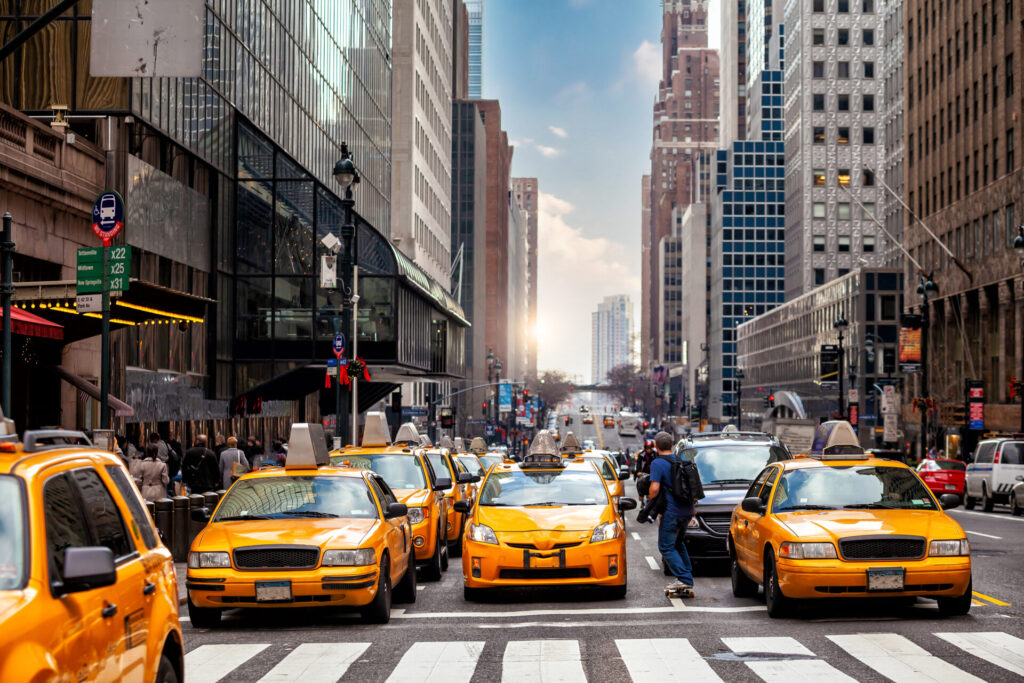
Times Square is more than just a busy intersection; it’s a cultural phenomenon that captures the essence of New York City’s dynamism. It’s a place of celebration, a hub of entertainment, and a beacon of urban spectacle. Whether you’re a first-time visitor or a seasoned New Yorker, Times Square has the power to surprise, delight, and overwhelm in the best possible way.
Honor and Reflection at the 9/11 Memorial & Museum
Why it Matters
The 9/11 Memorial & Museum stands as a profound tribute to lives lost and resilience gained.

The Big Picture
The 9/11 Memorial & Museum serves as a poignant reminder of one of the darkest days in American history, while also symbolizing the indomitable spirit of resilience and unity that followed. Situated at the site of the former World Trade Center, the memorial and museum are dedicated to honoring the 2,977 people killed in the terror attacks of September 11, 2001, and the six people killed in the World Trade Center bombing in 1993.
The Memorial’s twin reflecting pools are each nearly an acre in size and mark the footprints of the Twin Towers. The pools’ waterfalls are the largest man-made waterfalls in North America, designed to mute the sounds of the city and create a space of contemplation. The names of every person who died in the 2001 and 1993 attacks are inscribed into bronze panels edging the Memorial pools, allowing visitors to engage with the tribute in a deeply personal way.
The Museum’s 110,000 square feet of exhibition space tell the story of 9/11 through multimedia displays, archives, narratives, and a collection of monumental and authentic artifacts. The historical exhibitions present the narrative of the events of 9/11, while the memorial exhibition commemorates the lives of the victims through personal tributes.
By the Numbers
- 2,977: The number of victims honored from the September 11 attacks.
- 110,000 square feet: Size of the 9/11 Museum’s exhibition space.
- Nearly an acre: Size of each of the twin reflecting pools.
- Over 300: The number of trees in the Memorial’s plaza, including the “Survivor Tree.”
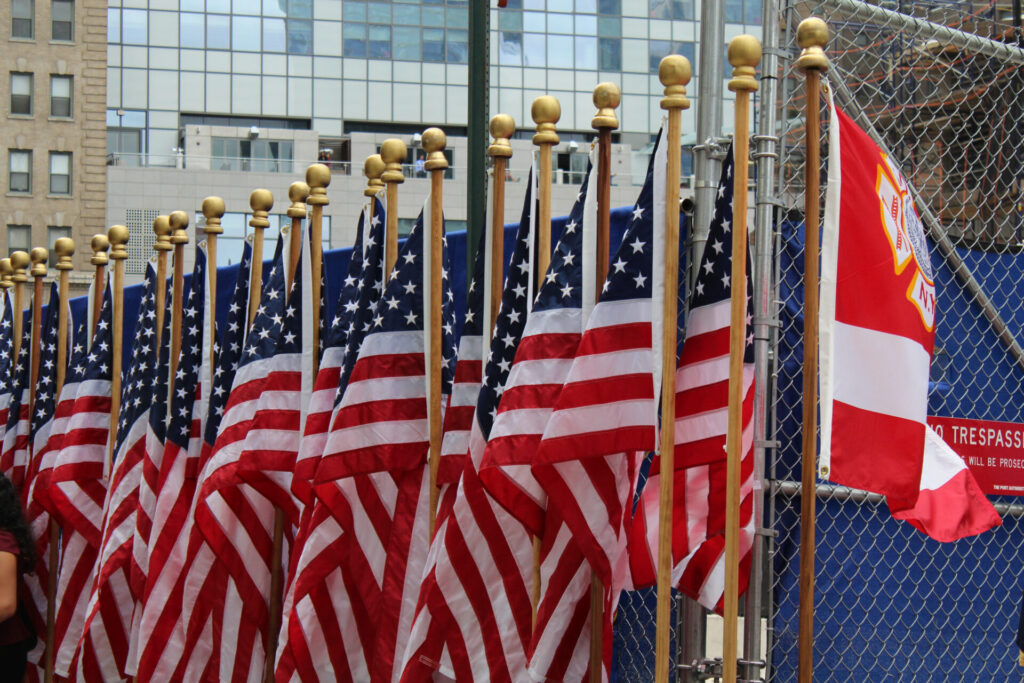
More Details
A visit to the 9/11 Memorial & Museum is an emotional, introspective experience. Here is a closer look at this hallowed ground:
The Reflecting Pools
The enormity of the pools and the cascading waterfalls create a powerful sensory and emotional experience. The design, which captures absence and remembrance, invites reflection on what was lost and contemplates the future.
Inside the Museum
The Museum’s exhibits are comprehensive and heart-rending, with artifacts ranging from twisted steel remnants of the towers’ facade to personal items recovered from the site. Each display is a window into the day’s events, the aftermath, and the global impact of the attacks.
The Survivor Tree
The “Survivor Tree,” a Callery pear tree found at Ground Zero, was rehabilitated and now thrives in the Memorial plaza. It stands as a living symbol of resilience, survival, and rebirth.
The Tribute in Light
An annual Tribute in Light commemorates the attacks with two vertical columns of light representing the Twin Towers, shining up to four miles into the sky and visible from over 60 miles away.
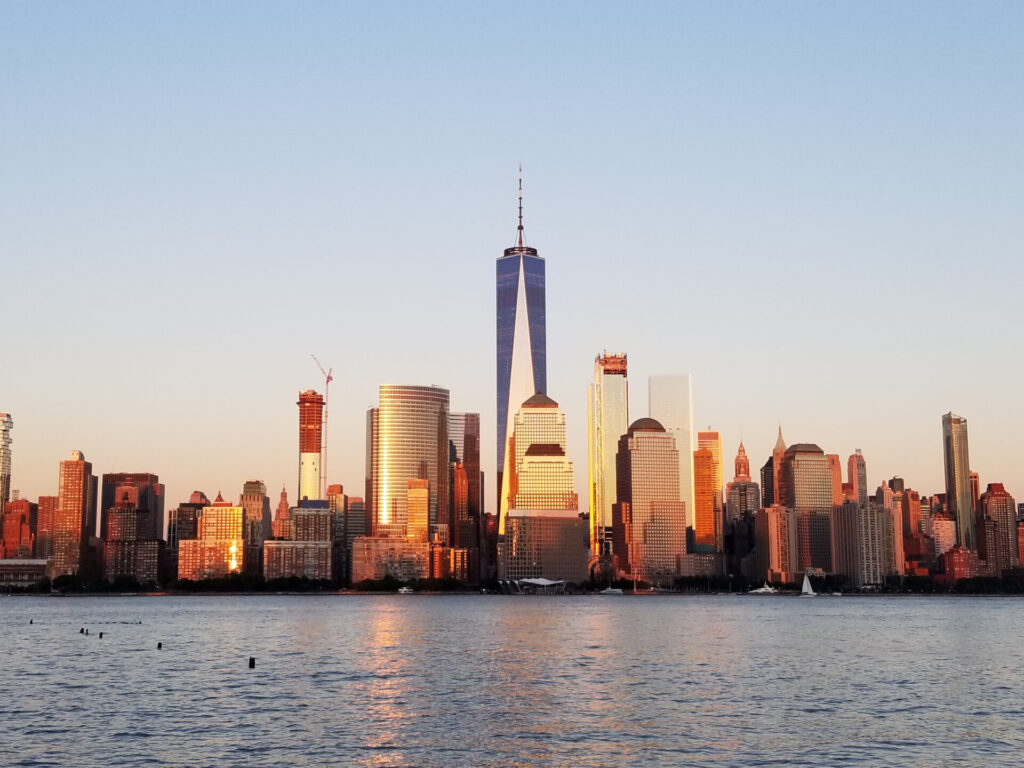
Planning Your Visit
Time your visit to avoid peak hours if possible. It’s a place for quiet reflection, and a more tranquil atmosphere can enhance the experience. Consider downloading the Memorial’s app for a self-guided tour or booking a guided tour for a more comprehensive understanding.
The 9/11 Memorial & Museum offers a place for contemplation, education, and a shared space for collective mourning and memory. It stands as a testament to loss and recovery, grief and strength, making it an essential visit for both those who remember the day vividly and those who’ve come to understand its significance through the passage of time.
Brooklyn Bridge Stroll: Manhattan to Brooklyn with Skyline Views
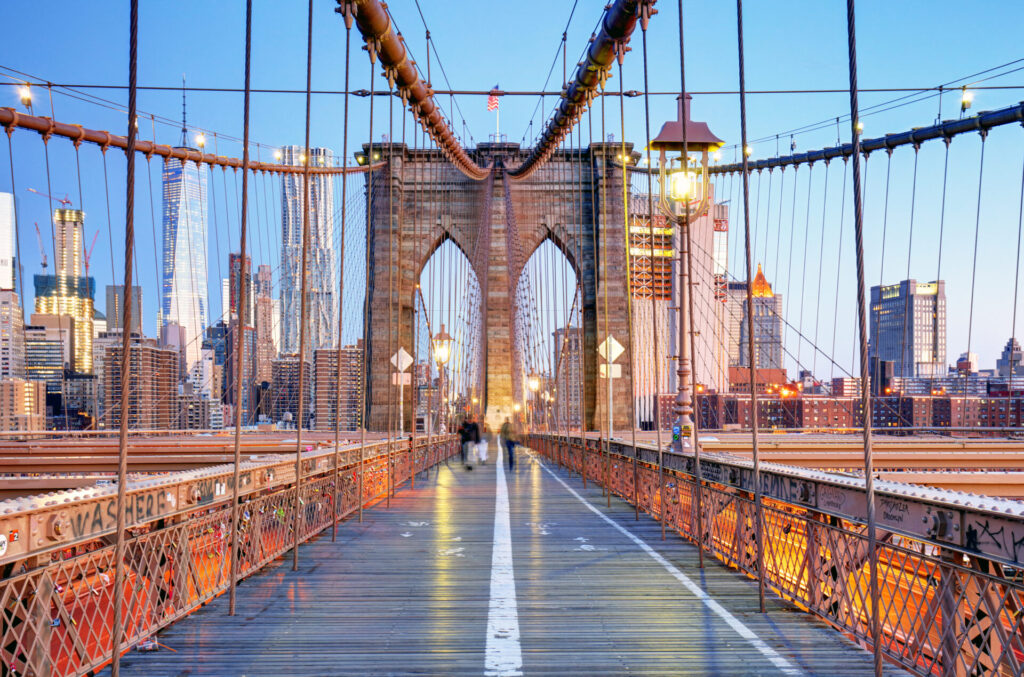
Why it Matters
Crossing the Brooklyn Bridge offers iconic views and a historic walking experience.
The Big Picture
The Brooklyn Bridge is not just a means of getting from one borough to another; it’s a historic span that provides some of the most iconic views of New York City. A walk across this bridge is a journey through the city’s past, present, and future. The pedestrian walkway, elevated above the roaring traffic, offers an uninterrupted view of the East River and the towering skylines of Manhattan and Brooklyn.
Completed in 1883, the Brooklyn Bridge was the world’s first steel-wire suspension bridge and is now a beloved landmark and a symbol of engineering triumph. Whether you’re making the trek for the exercise, the scenery, or the sheer novelty of walking across this 19th-century engineering marvel, the experience is always rewarding. The bridge’s Gothic-style arches and symmetrical cable lines make it a photographic gem, while the plaques along the walkway tell a story of innovation and ambition.
By the Numbers
- 1.1 miles: Total length of the Brooklyn Bridge, perfect for a leisurely walk.
- 1883: The year the Brooklyn Bridge was completed, making it a historic landmark.
- Over 120,000: The number of vehicles that cross the Brooklyn Bridge daily.
- Approximately 4,000: The number of pedestrians who walk the bridge each day.
More Details
Here’s a more detailed look at what makes the Brooklyn Bridge walk a must-do:

A Path with a View
The walkway is not just for commuters; it’s a prime spot for photographers, tourists, and anyone looking to catch a sunrise or sunset framed by the city skyline. The vistas include the Statue of Liberty, the Empire State Building, and One World Trade Center.
A Monument of History
Walking the bridge is a step back in time. It was the longest suspension bridge in the world at the time of its completion and represented a new era for Brooklyn, which was not yet incorporated as part of New York City.
Cultural Significance
The bridge has featured in countless movies, TV shows, and is a muse for poets, writers, and artists, symbolizing the melding of culture and commerce between Manhattan and Brooklyn.
A Great Workout
For those looking to combine sightseeing with exercise, walking the bridge’s inclined wooden plank walkway provides a moderate workout with a view.
Visitor Tips

To have the best experience, walk from Manhattan to Brooklyn, where you can enjoy pizza or ice cream in DUMBO, the neighborhood directly after the bridge. Early morning or late evening walks offer a quieter experience, and cyclists should use the dedicated bike lane.
Walking the Brooklyn Bridge is an opportunity to savor New York from a unique perspective. It’s an architectural wonder, a historic monument, and a vibrant part of the city that offers both serenity and spectacle. Whether you’re a lifelong New Yorker or a first-time visitor, the journey across is always a memorable one, filled with moments of awe at the grandeur of the city it connects.
MoMA Visit: A Mecca for Modern Art Aficionados

Why it Matters
MoMA is a treasure trove of contemporary art, encapsulating innovation and creativity.
The Big Picture
The Museum of Modern Art (MoMA) in New York City is a dynamic, thought-provoking foray into modern and contemporary art, housing some of the most influential pieces of the 19th, 20th, and 21st centuries. A trip to MoMA is not just about observing art; it’s about experiencing the evolution of modern thought and aesthetics as they unfold through a diverse range of media — from paintings and sculptures to films and performance art.
MoMA’s collection offers a panoramic view of modern art, including works by Van Gogh, Dali, and Warhol. The museum’s constantly rotating exhibitions mean that every visit can offer something new. For art lovers, it’s a pilgrimage site; for newcomers, an eye-opening dive into the art world’s heart.
By the Numbers
- 200,000+: The number of artworks in MoMA’s collection.
- 3 million+: Annual visitors to the museum.
- 1929: The year MoMA was founded, marking its place as the first museum dedicated to modern art.
- 6: The number of floors of gallery space open to the public.
More Details
A deeper exploration into MoMA reveals:
Groundbreaking Galleries
Each gallery in MoMA is meticulously curated to present art in thematic and historical context, offering visitors not just a viewing experience but an educational journey. From the serene Water Lilies by Monet to the jarring works of the Dada movement, each piece is part of a larger narrative about art’s evolution.
Sculpture Garden
The Abby Aldrich Rockefeller Sculpture Garden is an oasis in the city, showcasing sculptures by renowned artists in an open-air setting that invites contemplation.
Educational Programs
MoMA provides a plethora of educational programs and resources, including audio guides, artist talks, and workshops, catering to all levels of art appreciation.
MoMA Design Store
For visitors looking to take a piece of MoMA home, the MoMA Design Store offers a selection of items that reflect the museum’s commitment to good design.

Visiting Tips
To get the most from your MoMA visit, plan ahead. Members get early access to galleries and free entry, which can be a good deal for frequent visitors. Weekdays are less crowded than weekends. Consider the free Friday nights if you’re looking for a deal, but be prepared for more company.
In essence, MoMA is a living, breathing institution where art is not just displayed but celebrated, questioned, and discussed. It stands not only as a museum but as a cultural hub where art lovers from around the world converge. Whether you’re an art connoisseur or a curious onlooker, MoMA invites you to engage with art in new and unexpected ways, leaving you with a richer understanding of the world of contemporary art.
Empire State: A Sky-High Perspective of New York City
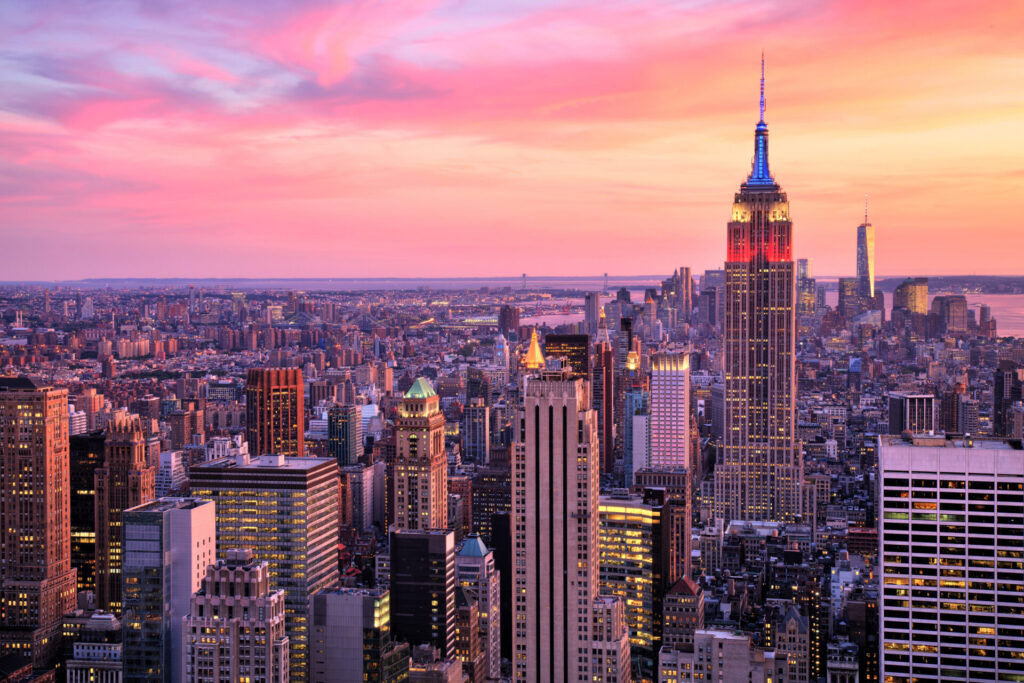
Why it Matters
The Empire State Building offers unparalleled panoramic views of New York’s skyline.
The Big Picture
The Empire State Building is more than an iconic New York City skyscraper; it’s a symbol of human ambition and ingenuity. Its observation decks on the 86th and 102nd floors offer stunning 360-degree views of the Big Apple. On a clear day, you can see up to six states from the top: New York, New Jersey, Pennsylvania, Connecticut, Massachusetts, and Delaware.
This Art Deco masterpiece, once the tallest building in the world, has defined the city’s skyline since 1931. It’s not just the height but the history and cultural significance that draw over 4 million visitors each year. The Empire State Building has been featured in over 250 movies and is a staple of pop culture. A visit to the observation deck, especially at dusk when the city lights begin to twinkle, is an unforgettable New York moment.
By the Numbers
- 1,454 feet: The Empire State Building’s height, including its antenna.
- 102: The number of floors in the building.
- 1931: The year the building was completed, during the Great Depression.
- Over 4 million: The number of visitors to the Empire State Building each year.
More Details
The Empire State Building experience is rich with history and stunning sights:
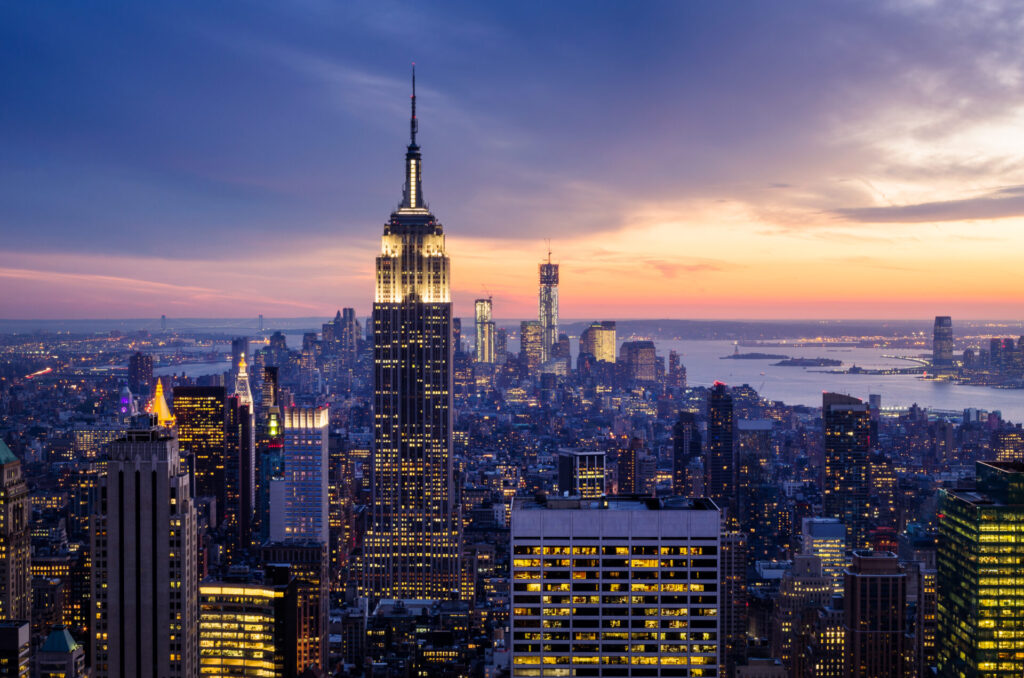
A Historic Landmark
The Empire State Building was constructed in just one year and 45 days, a testament to the industrious spirit of its era. Since then, it has become an enduring emblem of the city’s resilience and aspiration.
The Observatories
The 86th-floor observatory is the most famous and is open-air, allowing you to feel the breeze from 1,050 feet above street level. The 102nd floor is higher still, enclosed in glass, and offers a more intimate viewing experience.
Sustainability Efforts
The building is not just a historic landmark but a modern example of sustainability. It underwent a $550 million renovation to improve its energy efficiency and reduce its environmental impact.
The Lighting
The Empire State Building is known for its tower lights, which commemorate holidays, events, and organizations in different colors—making the building an active participant in the city’s many narratives.
Planning Your Visit
Tickets for the observation decks can be purchased online to save time. For a unique experience, visit at sunrise or late at night (the decks are open until 2 AM) to avoid crowds and see the city in a different light.
The Empire State Building is not merely a tall structure to scale; it’s a journey into the soul of New York City. From the grandeur of its Art Deco lobby to the expansive views at its summit, it offers a moment of connection with the city that’s both uplifting and deeply moving. Each visit confirms why the Empire State Building has remained a beacon of New York City’s cultural identity for nearly a century.
Top of the Rock: Sunrise vs. Sunset Panoramic Splendor
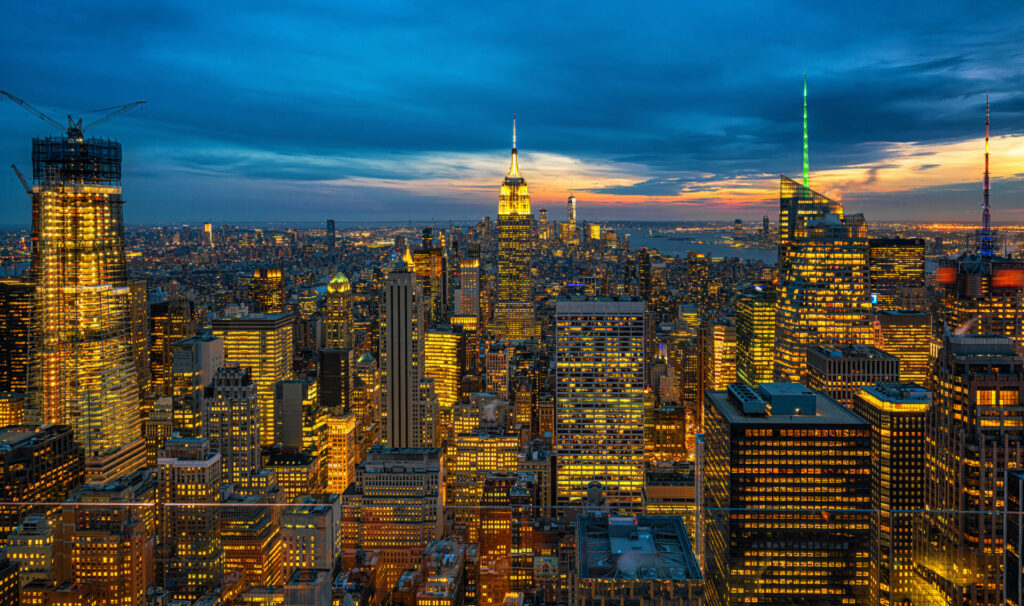
Why it Matters
Top of the Rock offers distinct, majestic views of NYC’s skyline at dawn and dusk.
The Big Picture
Top of the Rock Observation Deck at Rockefeller Center presents a unique vantage point over New York City. Whether you choose the tranquil early hours of sunrise or the dramatic hues of sunset, each provides a breathtaking experience. The deck offers a clear, unobstructed view of the Empire State Building and Central Park, making it a favorite for both photographers and sightseers.
The observation deck spans the 67th, 69th, and 70th floors of 30 Rockefeller Plaza, where visitors can enjoy three different perspectives of the city. Unlike the narrow, crowded streets of Manhattan, the spacious, open-air decks provide a moment of peace above the city’s hustle and bustle. The decision between sunrise or sunset is a personal one: do you prefer the soft, serene light of morning, or the vibrant, energetic colors of evening?
By the Numbers
- 3: The number of observation levels at Top of the Rock.
- 850 feet: The height of the Top of the Rock’s uppermost deck.
- 360-degree: The panoramic view that encompasses all of NYC.
- 1929-1940: The years during which Rockefeller Center was constructed.
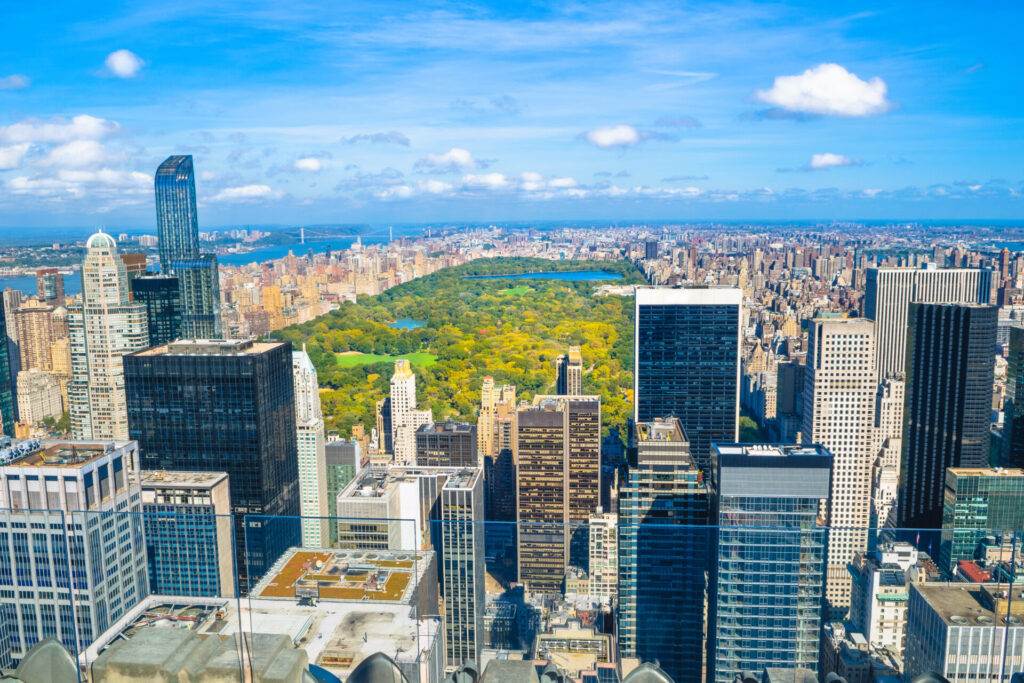
More Details
Delving into the experience, each option has its charm:
Sunrise at Top of the Rock
For early risers, sunrise at Top of the Rock is a serene and somewhat private affair. It’s less crowded, allowing for uninterrupted views as the city awakens. The soft morning light gently illuminates the skyscrapers and landmarks, offering a calm start to the day.
Sunset Views
As the sun descends, the city transitions from day to night in a spectacle of colors. Sunset times are more popular and can be crowded, but the experience is worth it. The skyline silhouetted against the twilight sky is a photographer’s dream.
Flexibility for Visitors
Top of the Rock has timed ticketing, which means you can plan your visit in advance and avoid the wait times associated with other observation decks.
Interactive Exhibitions
Before or after enjoying the view, visitors can explore the interactive exhibitions detailing the history of Rockefeller Center and the construction of this Art Deco skyscraper complex.
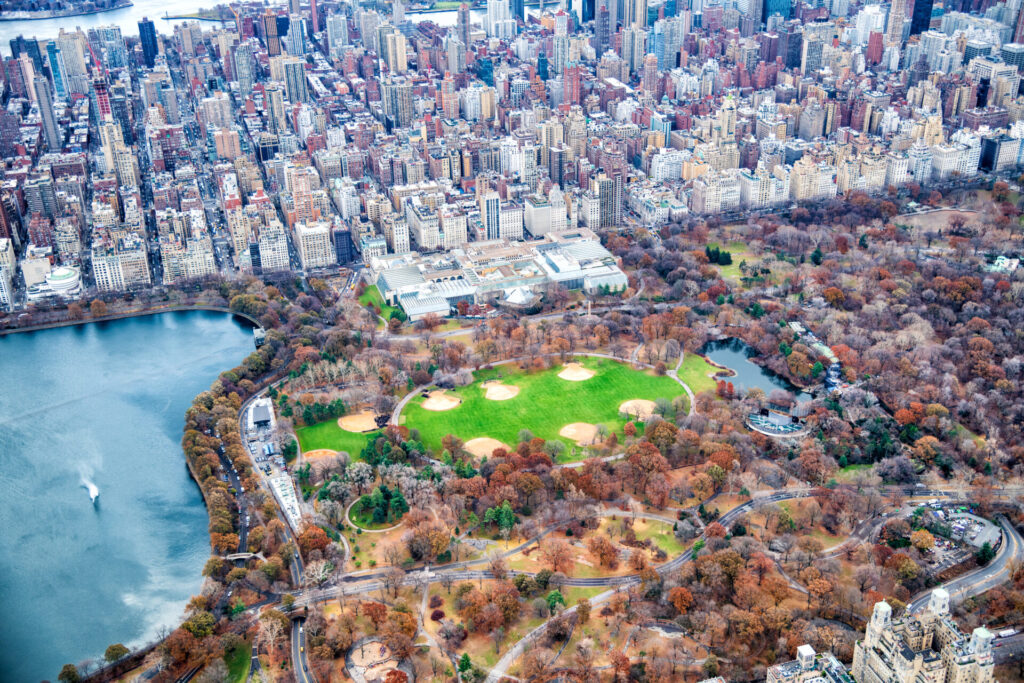
More Than Just Views
Rockefeller Center is an attraction in its own right, with the famous ice-skating rink, NBC Studios, and Radio City Music Hall.
Tips for the Trip
For the best experience, check the weather before you go. Visibility can make or break your observation deck experience. Also, consider purchasing a sunrise or sunset pass to ensure access at these peak times.
Top of the Rock is not just about what you see; it’s about what you feel when you see it. Whether bathed in the gentle dawn light or aglow with the setting sun, the views are more than just scenic — they’re emotional, memorable, and quintessentially New York.
SoHo Shopping: Trendy Boutiques Meet Fashion Giants

Why it Matters
SoHo’s unique shopping experience blends high fashion with boutique charm.
The Big Picture
SoHo, short for South of Houston Street, is not just a neighborhood—it’s a canvas showcasing New York City’s dynamic blend of history and modernity, especially in fashion. The area’s cast-iron buildings, cobblestone streets, and lofty artistic roots provide an atmospheric backdrop for one of the city’s premier shopping experiences.
Once known as the center of the art world, SoHo has morphed into a shopping mecca, with everything from high-end fashion houses to independent boutiques. Retail therapy in SoHo offers more than just purchases; it’s an aesthetic voyage. From the latest trends to timeless pieces, SoHo invites shoppers to explore an eclectic mix of styles and eras.
By the Numbers
- Over 250: The number of art galleries that once thrived in SoHo.
- 26 blocks: The span of SoHo’s shopping district, packed with retail options.
- 500+: The count of unique stores in the neighborhood.
- Millions: The number of visitors SoHo attracts each year for its shopping scene.
More Details
An Eclectic Shopping Tapestry
SoHo’s fashion landscape is as varied as the people who walk its streets. Alongside the world-renowned fashion retailers, you’ll find independent shops that boast unique, handcrafted items you’d be hard-pressed to find anywhere else. These small boutiques often carry the work of local designers, offering a piece of New York City’s culture to take home with you.
The Architecture of Shopping
The historic nature of SoHo’s architecture presents a shopping experience unlike any other. The district is renowned for its cast-iron buildings, many of which house these fashion stores. Shopping in SoHo is as much about the environment as it is about the items you’re browsing. Each store comes with its ambiance, from rustic and bohemian to sleek and modern.

From Streetwear to High Fashion
SoHo is a haven for fashion enthusiasts of all stripes. Whether you’re searching for the perfect streetwear ensemble, an avant-garde statement piece, or high-quality wardrobe staples, SoHo’s retailers have you covered. And for those interested in high fashion, luxury brands offer the latest in couture.
A Full Day’s Itinerary
Shopping in SoHo can easily fill a day’s itinerary. Start with coffee from a chic café and weave through the streets, visiting both famed retailers and hidden gems. Break for a meal at one of the neighborhood’s trendy eateries, and then continue your exploration into the evening.
Beyond the Purchase
The shopping experience in SoHo extends beyond the tangible. It’s an opportunity to soak in the creativity and energy of one of New York’s most vibrant districts. It’s common to encounter street performers, pop-up art installations, or a fashion shoot in progress, adding layers to the SoHo shopping experience.
Seasonal Markets and Events
Seasonally, SoHo hosts markets and fashion events that attract designers and shoppers from across the globe. These events often feature limited collections and one-of-a-kind pieces, adding to the allure of SoHo’s shopping scene.

The Takeaway
SoHo stands out as a shopper’s paradise, not just for the products but for the experience. Walking through SoHo with shopping bags in hand is to participate in New York City’s living, breathing fashion scene. It’s an experience that captivates the senses, sparks inspiration, and connects shoppers to the heartbeat of one of the world’s fashion capitals.
NY Public Library & Bryant Park: Culture Meets Tranquility

Why it Matters
The New York Public Library and Bryant Park offer an iconic blend of grandeur and leisure in the heart of NYC.
The Big Picture
The New York Public Library (NYPL), with its majestic lion statues guarding the entrance and Bryant Park, nestled amongst the urban backdrop, provides a dual experience of cultural enrichment and peaceful respite. The library’s grand Beaux-Arts architecture houses historical collections and serves as a sanctuary for knowledge seekers. Just steps away, Bryant Park serves as an urban oasis, offering a green retreat from the city’s frenzy.
By the Numbers
- Over 50 million: The number of items housed in the NYPL.
- 1911: The year the NYPL was officially opened.
- 9.6 acres: The size of Bryant Park.
- Over 12 million: The annual number of visitors to Bryant Park.
More Details
Architectural Marvel
The Stephen A. Schwarzman Building, the central branch of the NYPL, is not only a temple of knowledge but also a masterpiece of American architecture. The building’s exterior is awe-inspiring with its impressive stone façades, while the interior is a homage to classical beauty, with vaulted ceilings, ornate decorations, and paintings that speak of an era where grandeur met literacy.
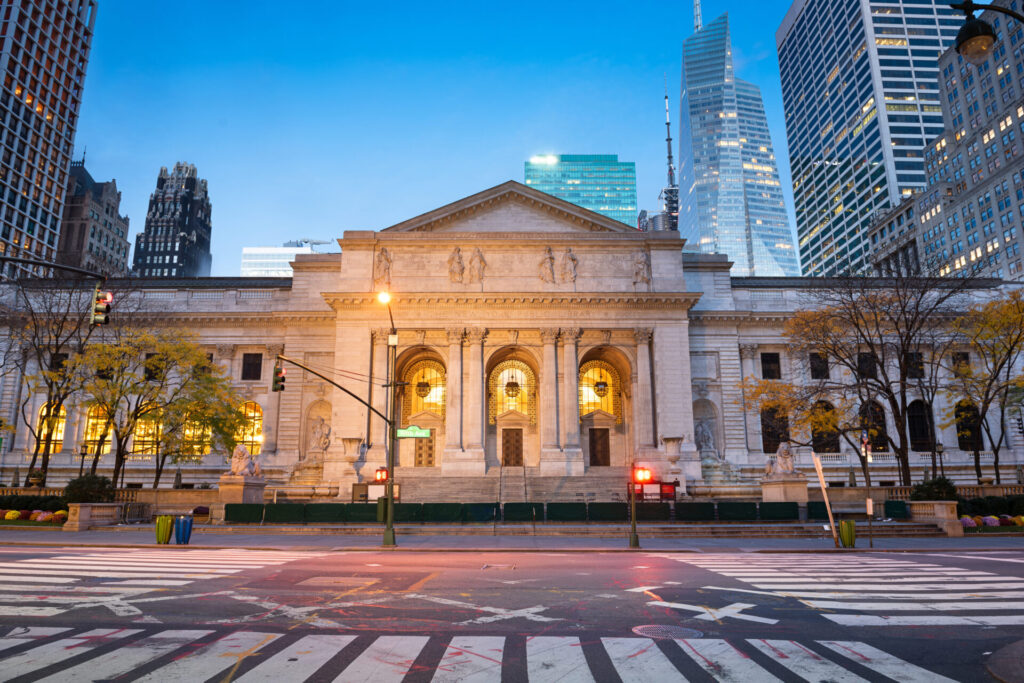
Inside the Library
Within its walls, the library offers a treasure trove of resources, from rare manuscripts to the latest publications. The Rose Main Reading Room, a highlight for many visitors, spans nearly two city blocks. Researchers, writers, and curious tourists coalesce in this cathedral-like space, indulging in the silent communion of study and contemplation.
A Park for All Seasons
Adjacent to the library, Bryant Park presents a stark contrast with its lush lawns, shaded paths, and the gentle cascade of its central fountain. It’s a year-round destination for locals and tourists alike, hosting events such as winter markets and summer film screenings, alongside daily activities like chess, yoga, and bird watching.
The Library’s Programs
The NYPL is not just about books. It’s a dynamic institution offering lectures, exhibitions, and workshops. It’s a hub for community engagement and lifelong learning, with programs that cater to all ages and interests.
Bryant Park’s Cultural Pulse
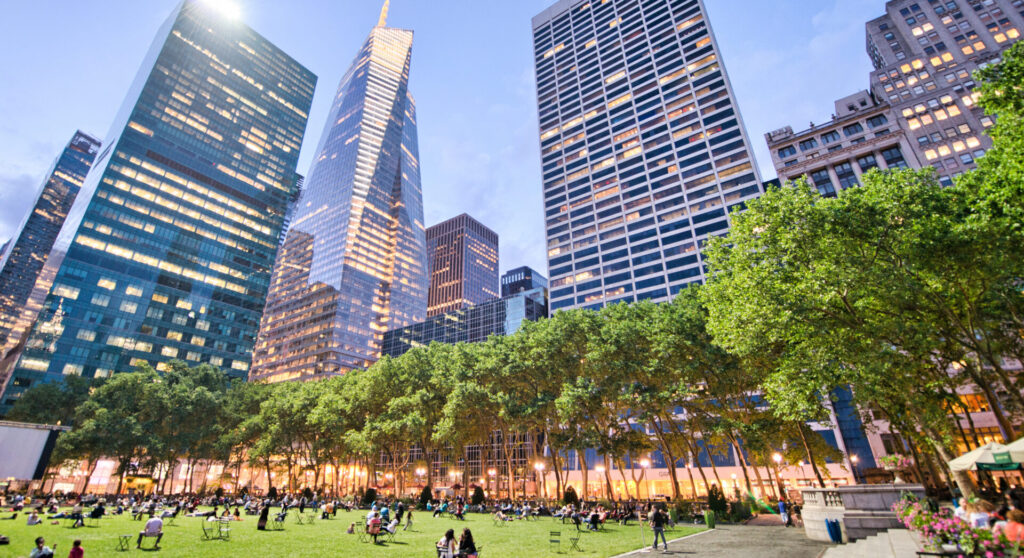
Bryant Park is more than just a place to sit and eat lunch. It’s a cultural hub in its own right, providing space for live music, theater productions, and food festivals. The park’s seasonal transformation includes a winter village complete with an ice-skating rink and holiday shops, while summers bring outdoor movies and Broadway performances.
A Respite in the City
The combination of the New York Public Library and Bryant Park creates a unique urban experience. It’s a place where one can transition from the intellectual stimulation of the NYPL’s vast archives to the recreational offerings of Bryant Park’s open space within minutes.
The Experience
Visiting these landmarks offers a holistic experience. It’s a juxtaposition of the bustling city life with the stillness of a reading room, the changing leaves of the park with the timelessness of the library’s stone. For many, this coexistence is symbolic of New York City itself—always moving, yet always capable of providing moments of pause and beauty.
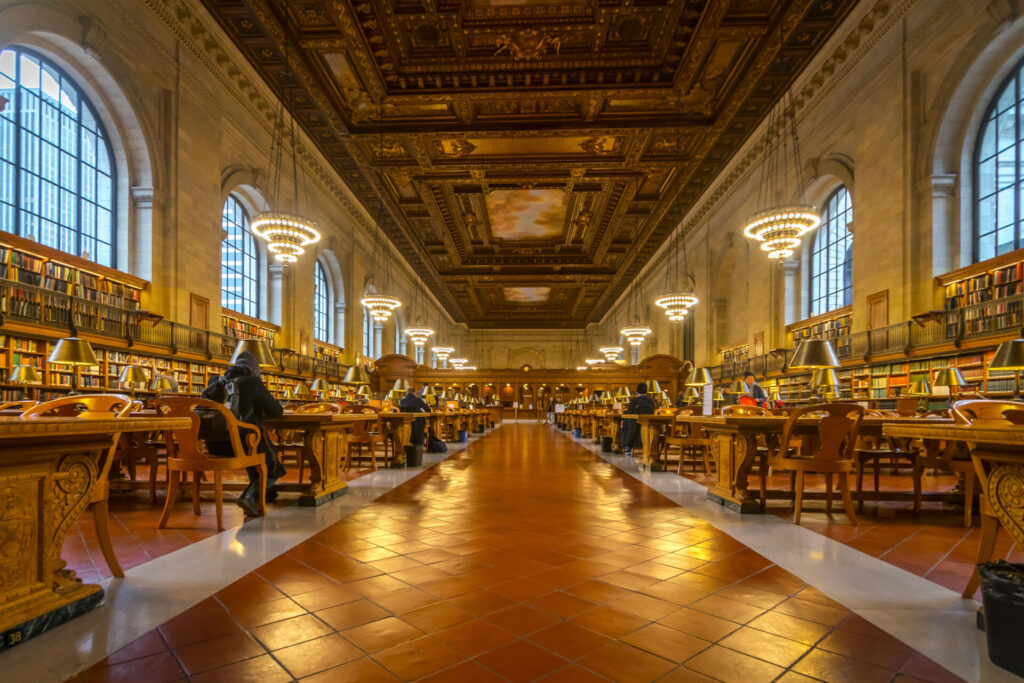
Together, the New York Public Library and Bryant Park represent the soul of Midtown Manhattan—a testament to the city’s commitment to both cultural heritage and community space. It’s a must-visit destination for anyone wanting to touch the pulse of the city while finding a moment of peace within it.
Greenwich Village: Bohemian Rhapsody Meets Urban Charm
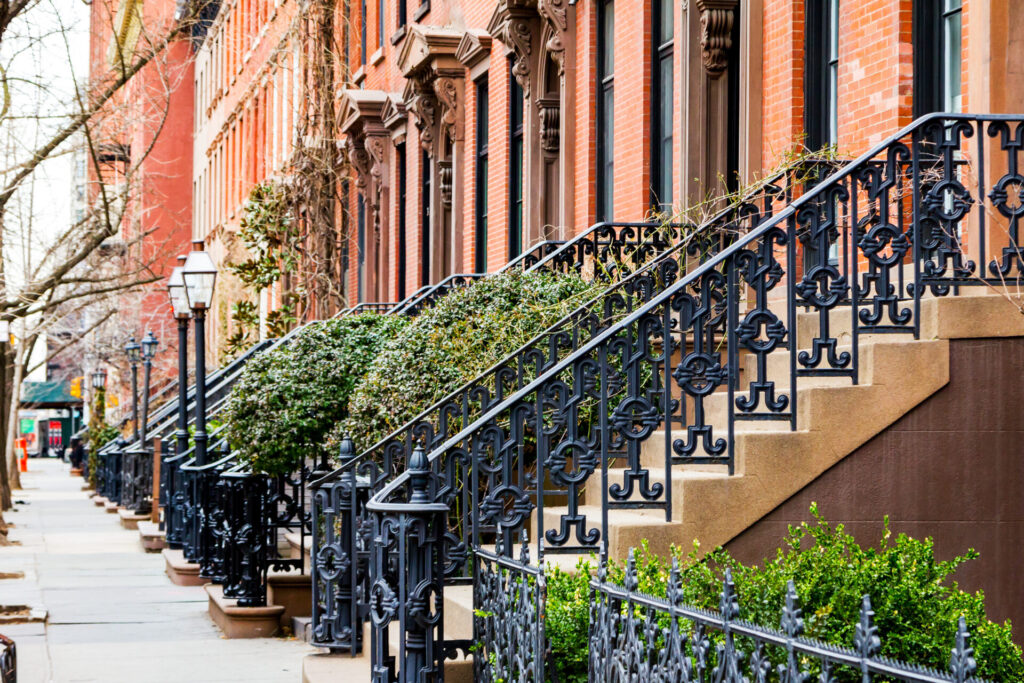
Why it Matters
Greenwich Village’s bohemian legacy is a cultural touchstone in the heart of Manhattan.
The Big Picture
Greenwich Village, affectionately known as “The Village,” has long been a haven for artists, writers, and musicians, fostering an influential bohemian and counterculture movement that still resonates today. Walking through the winding, often cobble-stoned streets, one experiences an atmosphere steeped in the creative energy that gave rise to iconic figures of literature, music, and art. Washington Square Park, the neighborhood’s focal point, is a microcosm of New York diversity and vibrancy.
By the Numbers
- 19th Century: When Greenwich Village began its rise as a notable bohemian enclave.
- 39 acres: The size of Washington Square Park.
- Hundreds: The number of artists and performers who have called The Village home.
- Countless: The number of visitors and locals who mingle in the park daily.
More Details
A Cultural Melting Pot
Greenwich Village has always been different. It dodges the city’s grid layout, opting instead for a European-inspired maze of streets that defy the rigid order of Midtown. This physical uniqueness has cultivated a distinct community, one that has consistently challenged the status quo. From the beat poets to the gay rights advocates who found their voice at the Stonewall Inn, The Village has been at the forefront of social change.
Washington Square Park
At the heart of The Village is Washington Square Park, with its triumphal arch and perpetual buzz of activity. Surrounded by NYU, the park is a crossroads for students, locals, and tourists, all drawn to its inclusive vibe. On any given day, one can encounter impromptu jazz ensembles, lively chess matches, and the quiet musings of aspiring poets.
Bohemian and Beyond
While the bohemian lifestyle may have mellowed over the years, the spirit of independence and artistic expression has not. Greenwich Village remains a bastion of independent bookstores, theaters, and cafes where the next generation of creatives gather.
Architectural Heritage
The Village’s architecture is a visual feast, showcasing an eclectic mix of styles, from 19th-century row houses and quaint mews to pre-war apartments. The preservation of these buildings has been paramount, allowing The Village to retain its historical character.
Nightlife and Cuisine
As night falls, the bohemian spirit gives way to a vibrant nightlife. Bars and clubs, some of which have been the cradle of major musical movements like punk and folk, buzz with the energy of live music. The culinary scene is equally dynamic, with an array of eateries that capture the neighborhood’s spirit—a mix of the traditional and the avant-garde.
The Creative Flame

The artistic flame of Greenwich Village burns as brightly as ever with galleries, live music venues, and the legendary Blue Note Jazz Club. There is a sense that, around any corner, one might stumble upon the next great artistic revelation.
Greenwich Village continues to stand as a symbol of cultural richness and resistance to conformity. Exploring its streets, one not only walks through the physical space of New York City but traverses the very history and heart of American counterculture. It’s an essential pilgrimage for anyone wishing to experience the city’s soul beyond the skyscrapers and stock exchanges.
Chinatown & Little Italy: NYC’s Dual Culinary Journey
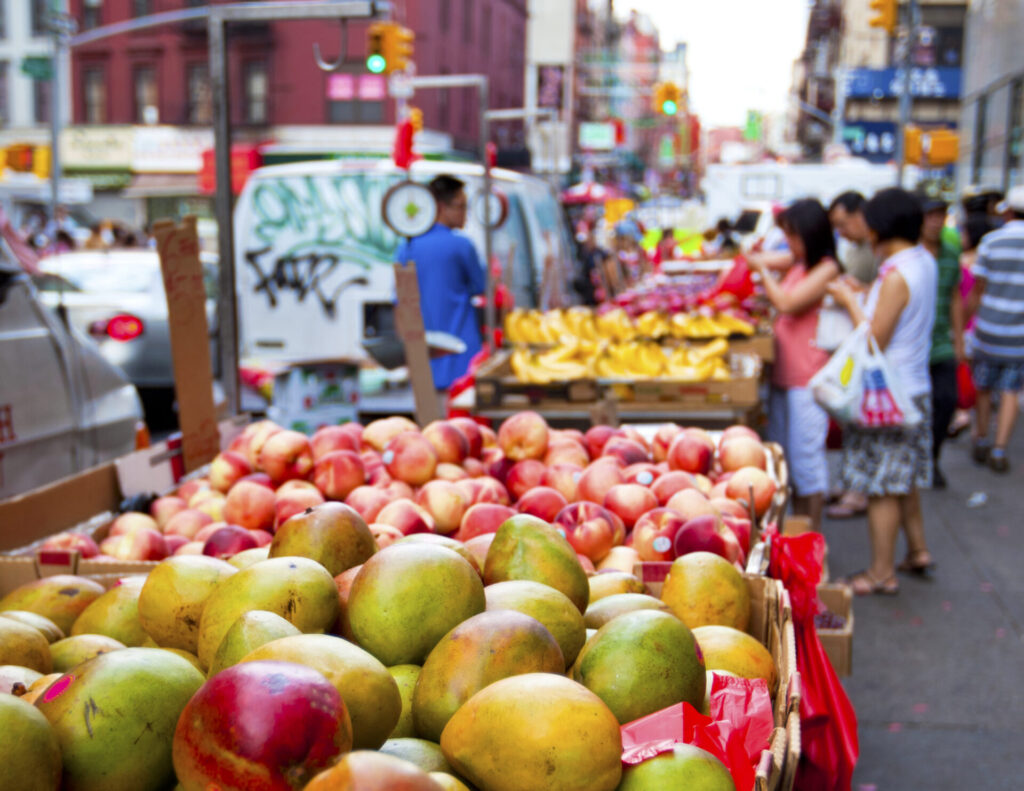
Why it Matters
Chinatown and Little Italy serve up authentic cultural experiences with their diverse, traditional cuisines.
The Big Picture
Nestled within the bustling streets of New York City, Chinatown and Little Italy exist side by side, offering a rich tapestry of cultural and culinary experiences. These neighborhoods are among the few places where one can take a short walk and journey from the far East to Western Europe through taste alone. Chinatown, with its exotic flavors and vibrant street life, and Little Italy, with its old-world charm and delectable Italian cuisine, provide locals and tourists with an authentic slice of their ancestral homelands.
By the Numbers
- Over 300: The number of Chinese restaurants in Chinatown.
- 20: The number of blocks Little Italy stretches through in NYC.
- Millions: The number of visitors frequenting these neighborhoods annually.
- 100+: The number of years some Little Italy eateries have been in business.
More Details
Chinatown’s Culinary Maze
Chinatown in NYC is not merely a neighborhood; it’s an experience. The streets are lined with an assortment of eateries that offer a vast array of Chinese cuisines—from the fiery Szechuan to the more subtle Cantonese dishes. The air is redolent with the smell of roasted duck from the windows of BBQ joints and the earthy tones of herbal medicine shops. Grocery stores spill out onto the sidewalks with exotic produce rarely found elsewhere in the city.

Little Italy’s Traditional Delights
Just a few steps away, Little Italy invites you with the aroma of garlic and fresh basil. This neighborhood, though reduced in size from its heyday, still holds the heart of Italian America. Traditional trattorias, family-owned pastry shops, and the annual Feast of San Gennaro are stalwarts, maintaining the Italian presence. Here, you can indulge in classic dishes like spaghetti carbonara, cannoli, and gelato that rival those from the old country.

Markets and Festivals
Both neighborhoods host markets where locals shop for ingredients that remind them of home. Mott Street in Chinatown bustles with fishmongers and greengrocers, while Mulberry Street in Little Italy is a slice of an Italian mercato. The cultural festivals in these neighborhoods, particularly the famous Lunar New Year celebration in Chinatown and San Gennaro in Little Italy, are a confluence of sights, sounds, and tastes.
Cultural Immersion
The exploration goes beyond food. These neighborhoods offer a foray into distinct cultural experiences with shops selling traditional goods. In Chinatown, find everything from intricate jade jewelry to delicate tea sets, while in Little Italy, artisanal shops offer handmade leather goods and Italian ceramics.
A Sensory Overload
Eating in Chinatown and Little Italy is a full sensory experience. It’s not just about the food; it’s the lively chatter, the clash of languages, the blend of music from street performers, and the colorful shopfronts that complete the immersion. The act of dining becomes a passage through history, culture, and community.
Navigating the Neighborhoods
For visitors, navigating these areas is part of the adventure. With little to no separation between the two, the transition from one neighborhood to the other can be seamless, allowing for an impromptu change from dim sum brunches to afternoon espresso.

The confluence of Chinatown and Little Italy in New York City stands as a testament to America’s melting pot identity. The preservation of these enclaves, in the midst of a rapidly modernizing city, allows for an appreciation of the immigrant stories that have shaped not only the city but the country at large. Eating here is not just a culinary delight but a homage to the generations that have contributed their heritage to the colorful mosaic that is New York City.
NYC Food Tours: A Smorgasbord of Global Flavors
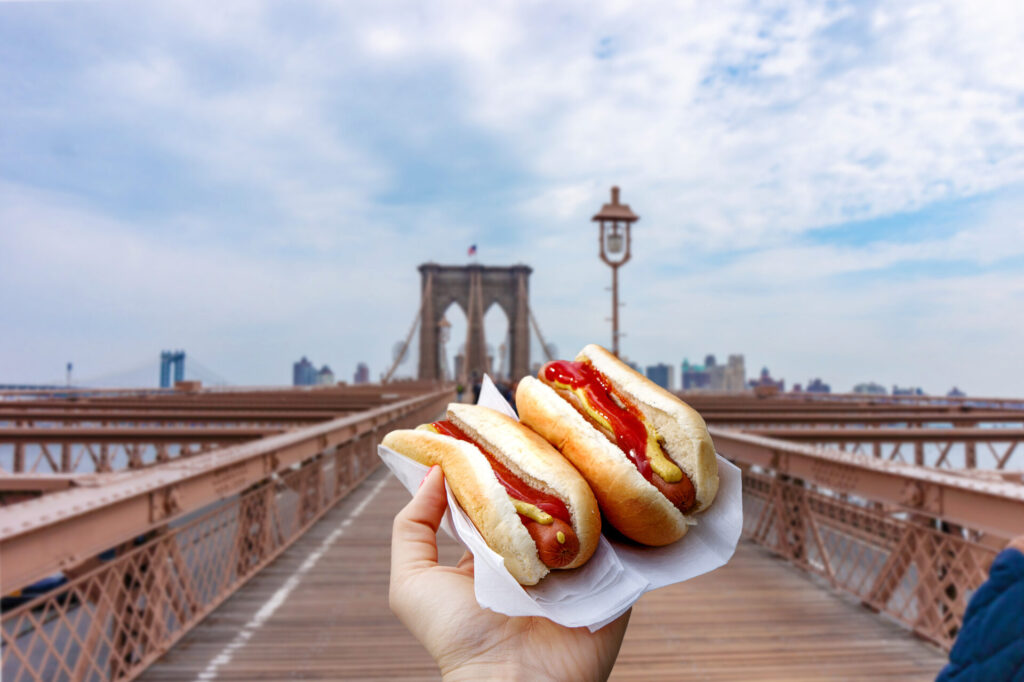
Why it Matters
Food tours in NYC offer a taste of the city’s vast culinary diversity in just a few hours.
The Big Picture
New York City, a bustling metropolis renowned for its cultural diversity, is a gastronome’s haven. A guided food tour across the city is not just a meal; it’s a narrative of flavors, traditions, and histories intertwined with each bite. These tours are tailored experiences that lead you through a carefully curated selection of eateries, from hidden gems to renowned institutions, each reflecting the patchwork of communities that make up the city’s population.
By the Numbers
- 80+ cuisines: Number of different culinary traditions available in NYC.
- Thousands: Yearly visitors indulging in food tours.
- 5 Boroughs: All offering unique food tour experiences.
- 3 to 5 hours: Average length of a comprehensive food tour in NYC.
More Details
An Edible Encyclopedia
NYC food tours are like a walking, talking edible encyclopedia. They offer a deep dive into the city’s culinary landscape, exploring neighborhoods that might otherwise go unnoticed by the casual visitor. Under the guidance of local food experts, these tours help unravel the cultural fabric of the city, one dish at a time.

The Neighbors and Their Nosh
Each NYC neighborhood brings its own flavor to the table. In Astoria, you can savor the spices of the Middle East and the Mediterranean. Move to Jackson Heights for an authentic taste of Indian, Tibetan, or Latin American cuisine. The Lower East Side serves up Eastern European Jewish delicacies, while Arthur Avenue in the Bronx is an enclave of old-school Italian fare.
Interactive Culinary Learning
A food tour is also a learning experience. Guides provide insights into the history and culture behind the cuisines you’re sampling. They’ll talk about the origins of dishes, how they’ve been adapted by New Yorkers, and the stories of the people who make them.
A Platform for Small Businesses
Food tours often support small, family-run businesses that are the heart and soul of New York’s food scene. Participants get to meet the owners, chefs, and purveyors who share their passion and tales, adding a personal touch to the experience.

Tailored Tastings
Food tours can cater to all sorts of food preferences and dietary restrictions, making it an inclusive activity. Whether you’re a die-hard carnivore, a vegan, or someone looking to try the latest health food craze, there’s a tour that caters to your tastes.
The Social Element
Food tours are not just about the food; they’re social affairs. They attract a mix of curious tourists and locals, making them a great place to meet new people who share a passion for food and exploration.
Beyond the Bite
While food is the star, these tours also offer the opportunity to discover the city’s architecture, history, and street art. It’s a way to see New York through a local lens, with each stop painting part of a larger picture of the city’s vibrant life.
Taking a food tour in New York City offers more than just a chance to try a variety of dishes; it’s an immersive journey into the essence of the city. The stories, the people, and the bustling energy of the streets combine to create an experience that goes beyond the palate. It’s a culinary adventure that leaves you with a deeper understanding and appreciation of NYC’s multifaceted communities, making it an indispensable part of any true New York experience.
Intrepid Museum: A Voyage Through Air, Sea, and Space History

Why it Matters
The Intrepid Museum offers an interactive journey across America’s military and space exploration heritage.
The Big Picture
Permanently docked on the west side of Manhattan, the Intrepid Sea, Air & Space Museum provides an unforgettable adventure for history buffs, technology enthusiasts, and families. Housed within the legendary USS Intrepid, a former aircraft carrier, the museum showcases a remarkable collection of artifacts spanning the history of sea, air, and space travel. From authentic aircraft to the space shuttle Enterprise, the museum celebrates American innovation and bravery.
By the Numbers
- 1: The only museum where you can experience a legendary aircraft carrier, a space shuttle, a world-class submarine, and a British Airways Concorde.
- Over 1 Million: Number of visitors the museum welcomes each year.
- 1943: The year USS Intrepid was commissioned during World War II.
More Details
The USS Intrepid: A Storied Past
The USS Intrepid served the United States admirably during World War II, surviving multiple kamikaze attacks and a torpedo strike. The ship later served in the Cold War and the Vietnam War. Today, it’s a national historic landmark and a monument to the sacrifices of the servicemen who served aboard her.
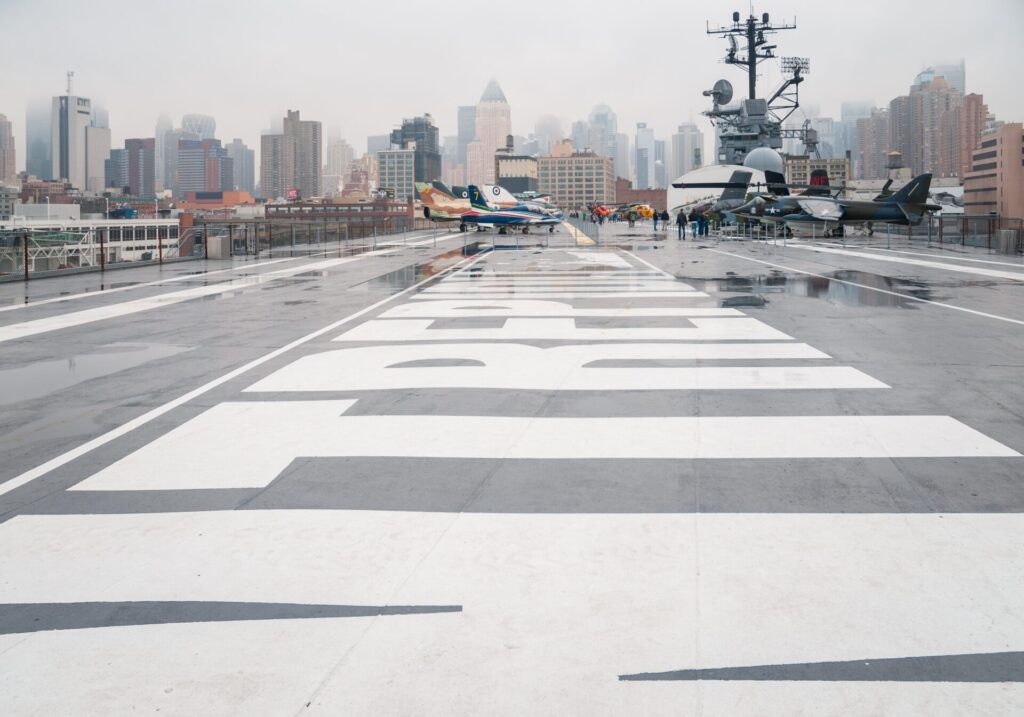
Air, Sea, and Space Artifacts
Upon stepping onto the Intrepid, visitors are transported into a world of technological wonders. The museum boasts an impressive collection of over two dozen authentically restored aircraft, including fighter jets that saw action in conflicts around the world and the A-12 Blackbird spy plane. The Hangar Deck houses the Exploreum, a hands-on hall that’s interactive and educational for all ages.
The Space Shuttle Pavilion
Perhaps the crown jewel of the museum is the Space Shuttle Pavilion, featuring the Enterprise. It was the first space shuttle orbiter and served as a test vehicle for NASA’s Space Shuttle program. The pavilion offers visitors a chance to learn about the space shuttle era and the steps toward our current and future endeavors in space exploration.
Submarine and Concorde
The museum also includes the Growler, the only American diesel-powered strategic missile submarine open to the public, and the British Airways Concorde, which was the fastest commercial aircraft to cross the Atlantic Ocean.
Educational Outreach
The Intrepid Museum isn’t just about observing; it’s about learning and engaging. With a variety of educational programs, including the Intrepid’s Summer Movie Series, the museum offers unique learning experiences for students and enthusiasts alike.
Veteran Voices
The museum also serves as a hub for veterans, offering programs that help them share their stories, connect with one another, and transition to civilian life. It’s not just a testament to technology but to the human spirit.
A visit to the Intrepid Sea, Air & Space Museum is a multi-faceted experience that enlightens and inspires. It’s a bridge connecting the past with the future, allowing visitors to not only marvel at the machines that have taken us around the world and beyond but also to honor those who have served. It’s an essential visit for anyone wanting to grasp the full story of American tenacity and ingenuity.
Chelsea Market: NYC’s Melting Pot of Flavors and Finds

Why it Matters
The Chelsea Market blends global cuisines and local artisan shopping under one historical roof.
The Big Picture
Tucked in the heart of New York’s Meatpacking District, Chelsea Market is not just a food court; it’s a culinary journey. Occupying an entire city block, the market sits within the same storied building that once housed the National Biscuit Company (Nabisco) factory. Today, it’s an epicurean paradise for locals and tourists alike, offering an array of artisanal eats, gourmet groceries, and unique shopping experiences. Its ambiance—a mix of industrial chic and creative flair—mirrors the neighborhood’s transformation from meatpacking plants to a hub of fashion, design, and food.
By the Numbers
- 6 million: The number of annual visitors to Chelsea Market.
- 35+ vendors: The array of food options available to sample and savor.
- 1898: The year the original Nabisco factory opened, where the first Oreo was invented and produced.
More Details
A Culinary Crossroads
The market has solidified itself as one of the greatest indoor food halls of the city. Patrons can indulge in a variety of offerings, from fresh lobster to artisanal cheese, homemade pastas, and an array of baked goods. Each vendor is carefully selected to represent the highest quality and to reflect New York City’s cultural diversity.
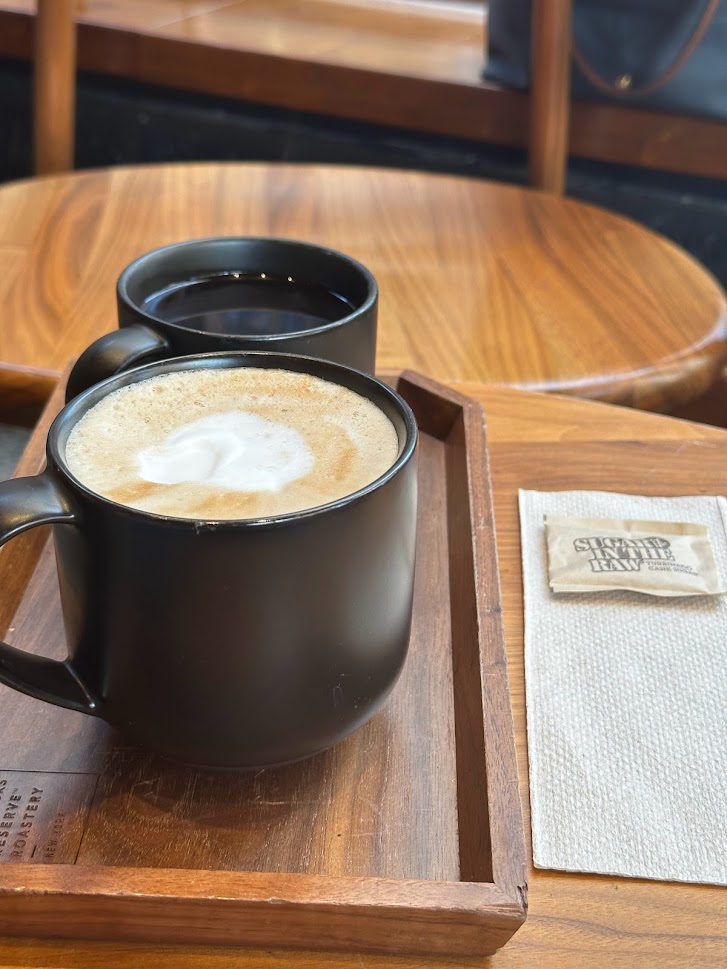
Sourcing and Sustainability
Chelsea Market emphasizes sustainability and locally sourced products. Many vendors procure ingredients from regional farms and suppliers, reinforcing the market’s commitment to supporting local businesses and sustainable practices.
A Hub for Food Entrepreneurs
It’s also a place for budding culinary entrepreneurs to shine. The market has been a launchpad for many successful ventures, giving small businesses a high-traffic venue to reach food enthusiasts.
Beyond Gastronomy
Chelsea Market isn’t solely about food; it’s also a shopper’s haven. The market houses an eclectic mix of shops selling everything from kitchen supplies to unique gifts, handcrafted jewelry, and vintage clothing. It’s a place where the products have stories and the sellers are artisans in their own right.
The Building’s Legacy
The market has preserved much of the original architectural features, including the exposed brick, metal framing, and vast windows, giving visitors a glimpse into the industrial era of New York’s past. It’s a building that tells a story of the city’s evolution, adding depth to the sensory experience of the market.
A Destination for Events
With frequent events and pop-up installations, Chelsea Market stays at the forefront of cultural trends and happenings, making it a lively destination any day of the week.
A Community Pillar
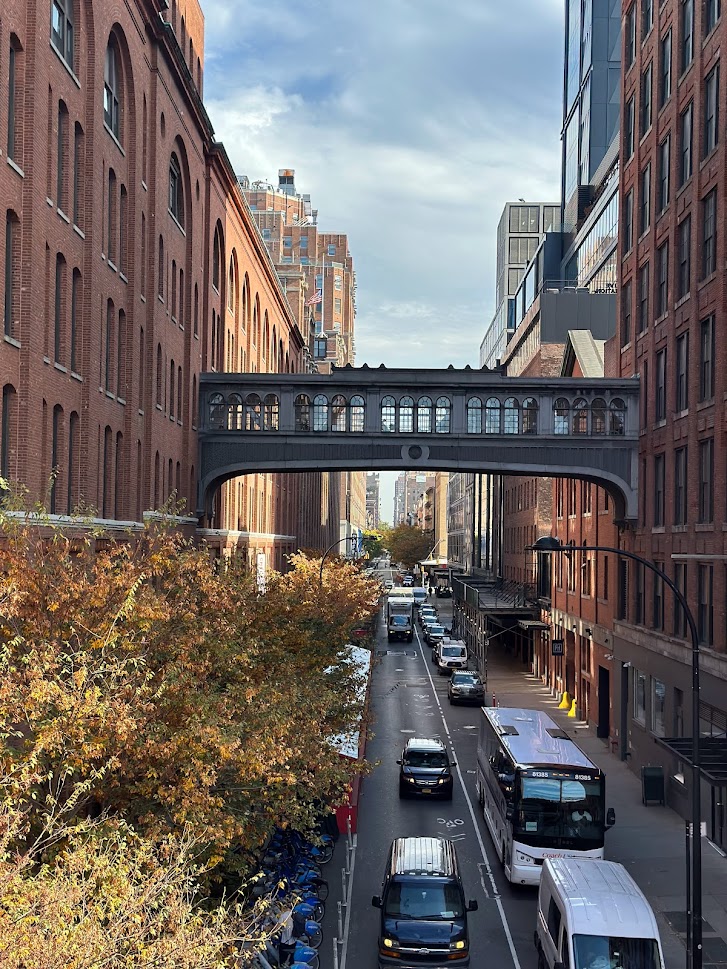
During challenging times, like the COVID-19 pandemic, Chelsea Market proved to be a community pillar, adapting to ensure safety without losing its vibrant essence.
The Chelsea Market is more than a simple stop for food; it’s a vibrant community space that captures the spirit of New York City. Its charm lies in the blend of history, culture, and the collective stories of its vendors and visitors. A stroll through the market is an adventure, a place to savor the flavors of the world and to find that one-of-a-kind gift, all the while soaking in the intangible buzz that is uniquely New York.
One World Observatory: Gaze from the Western Hemisphere’s Summit

Why it Matters
One World Observatory offers unparalleled panoramic views from America’s tallest building.
The Big Picture
One World Observatory sits atop the soaring One World Trade Center, the tallest building in the Western Hemisphere. At its breathtaking height, the observatory provides visitors with more than just a bird’s-eye view—it offers a moment of awe, reflection, and inspiration. The experience begins the moment you enter the Sky Pod elevator, which whisks you to the 102nd floor in under 60 seconds, surrounded by a floor-to-ceiling immersive time-lapse of New York City’s skyline. Once at the top, the See Forever Theater presents a dynamic visual journey, culminating in the reveal of the skyline itself.
By the Numbers
- 1,776 feet: The symbolic height of One World Trade Center, matching the year of America’s independence.
- 3: The number of floors (100th to 102nd) dedicated to the observatory.
- 4: The number of states visible from the observatory on a clear day—New York, New Jersey, Pennsylvania, and Connecticut.
More Details
A Symbol of Resilience
One World Trade Center stands on a site that’s deeply engrained in the collective memory of the United States. The observatory is not only a marvel of architecture but also a symbol of the resilience and determination of a nation to rise up from adversity. Visitors often describe a visit to the observatory as an emotional and uplifting experience, not just a sightseeing opportunity.
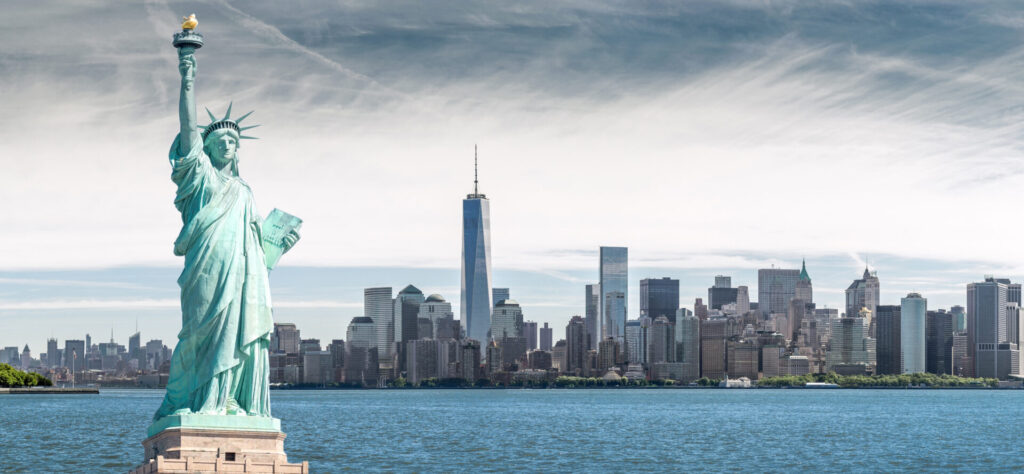
Interactive Exhibits
At the observatory, interactive exhibits allow visitors to explore the city’s neighborhoods, landmarks, and history. The Sky Portal, a 14-foot wide circular disc, offers real-time, high-definition footage of the streets below, giving the exhilarating feeling of standing above an open space.
Dining Above the Clouds
Dining options at One World Observatory include options from casual café fare to exquisite fine dining with a view. Eating here isn’t just about the food; it’s an integral part of the experience, where the ambiance is as compelling as the menu.
An Architectural Triumph
The design of One World Trade Center, the home of the observatory, is a technological marvel. It incorporates advanced safety features, environmental innovation, and the use of renewable energy, setting new standards in high-rise building design.
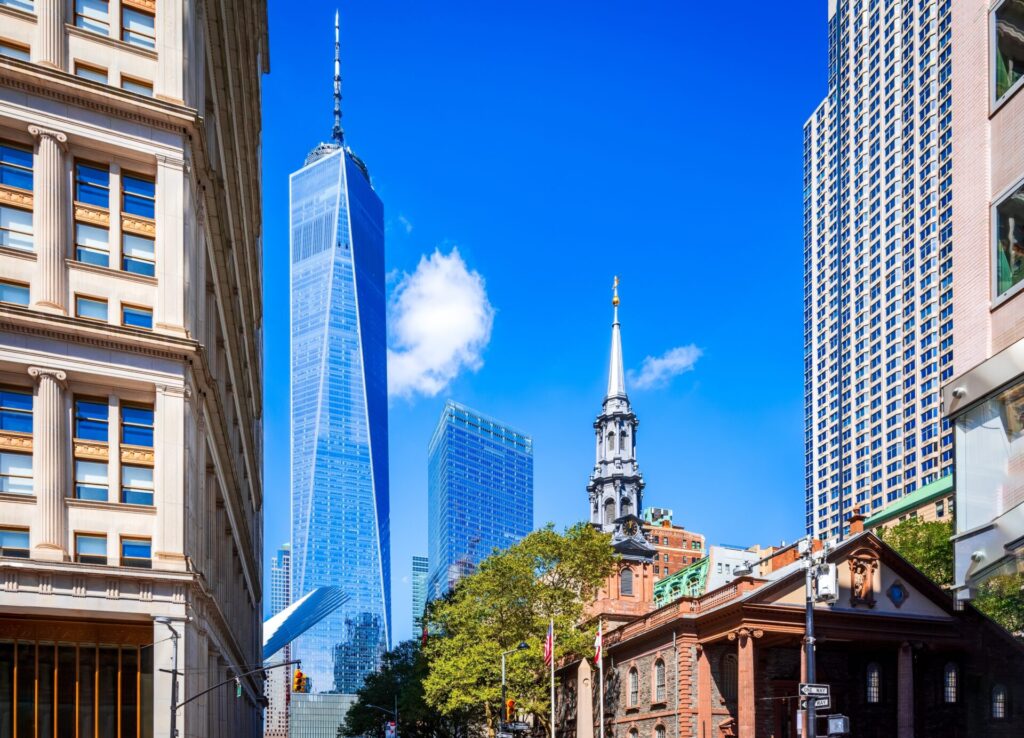
Educational Outreach
The observatory also serves as an educational platform, offering guided tours that inform visitors about the construction of the building, the history of the site, and the events that led to the new development.
Celebrating Special Occasions
One World Observatory has become a hotspot for special events, from marriage proposals to exclusive corporate gatherings, all taking place against the backdrop of the majestic cityscape.
A trip to the One World Observatory transcends a simple tourist activity. It’s a journey through history, emotion, and beauty, leaving visitors with a lasting impression of New York City’s dynamism and spirit. From the ground to the sky, it encapsulates the essence of the city’s ability to reach for the stars while keeping its roots firmly planted on solid ground.
Live Taping in NYC: See TV Magic Unfold Before Your Eyes

Why it Matters
Attending a live taping in NYC offers a behind-the-scenes look at television’s most iconic shows.
The Big Picture
Experiencing a live TV show taping is an opportunity to peek behind the curtain of television production in New York City, the media capital of the world. Whether it’s the comedy sketches of “Saturday Night Live” or the morning buzz of “The Today Show,” being part of a live audience is a unique blend of entertainment and involvement in TV-making magic. Audience members not only witness the polished end-product but also the unscripted moments, the set changes, and the intricacies of production that go into crafting a seamless broadcast.
By the Numbers
- 1975: The year “Saturday Night Live” debuted, becoming an NYC live taping institution.
- Hundreds: The number of live audience seats available at popular show tapings.
- 1: The month advance notice typically required to secure tickets for in-demand shows.
More Details
The Thrill of the Moment
There’s a palpable thrill in the atmosphere of a live taping—a sense of excitement knowing that what happens in the moment goes straight to viewers’ screens. It’s a chance to be part of television history, to laugh at jokes the moment they land, and to experience the charisma of TV personalities up close.
Planning is Key
Getting tickets often requires planning and a bit of luck. Most shows have online lotteries or advance ticketing systems, and for the most popular shows, potential audience members might need to book weeks or months in advance. For some tapings, last-minute standby tickets are an option, which can provide an unexpected opportunity to those willing to try their luck.
A Diverse Slate of Shows
New York’s live tapings aren’t limited to just comedy and morning shows. Game shows, talk shows, and political satires also welcome live audiences. Each offers a different vibe—from the electric energy of late-night comedy to the polished, upbeat environment of morning talk shows.
A Peek Into the Process
Being part of a live audience also means seeing how producers and crew manage the unexpected. Retakes, breaks, and on-the-fly adjustments offer a fascinating glimpse into the realities of live broadcasting.
Rules and Etiquette
Audience members are often part of the show and are expected to follow certain guidelines. This can include arriving early, dressing appropriately (often in bright, solid colors), and bringing photo ID. Electronics are typically not allowed during the taping to prevent leaks and distractions.
Audience Participation
Many shows involve the audience in various segments, from clapping and cheering to, occasionally, participating in the show itself. It’s a chance to contribute to the show’s energy and maybe even get a moment in the spotlight.
A Free Entertainment Option
Most live tapings are free, making it an affordable way to enjoy world-class entertainment. This is particularly appealing for travelers and locals looking for an economical way to experience the city.

Attending a live taping is an opportunity to become part of a show’s legacy, to see favorite celebrities, and to experience firsthand the complexity and excitement of live television production. It’s a blend of theatrical performance, meticulous coordination, and spontaneous fun—a microcosm of New York City itself. Whether you’re a die-hard fan of a particular show or simply curious about television production, being in the audience is a memorable way to engage with the city’s vibrant media culture.
Are you tired of traveling to the same old European destinations like France, Italy, or Spain? If you’re looking for a unique and diverse travel experience, consider the hidden gems of the A Country A Month series, waiting to be explored. The author is an avid photographer and traveler. His favorite travel companion is his vintage leather-bound journal, in which he sketches and writes about his adventures.


